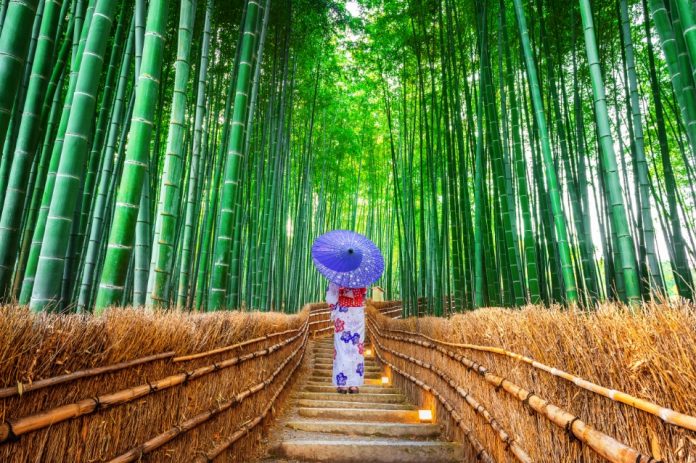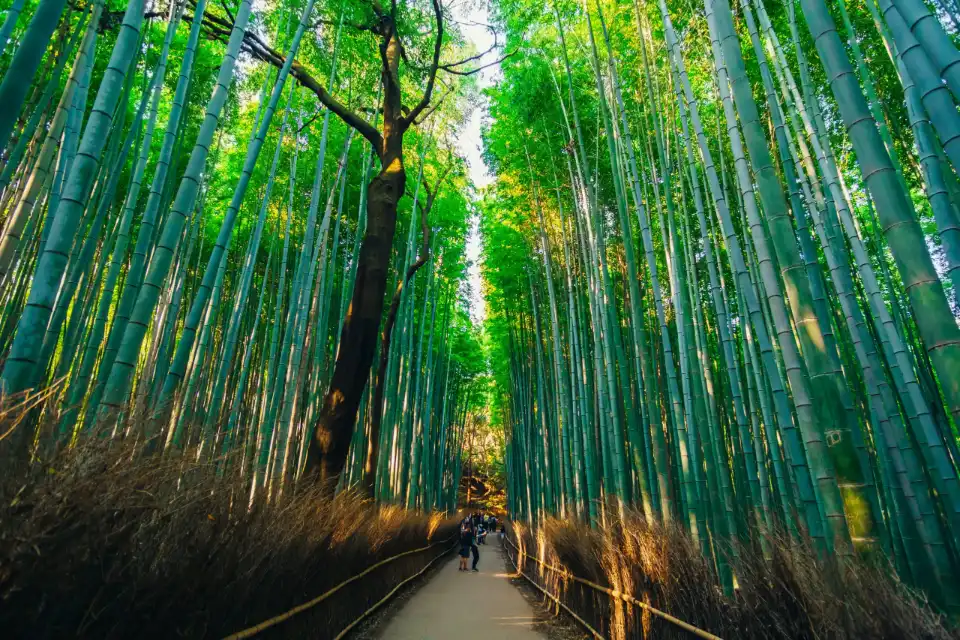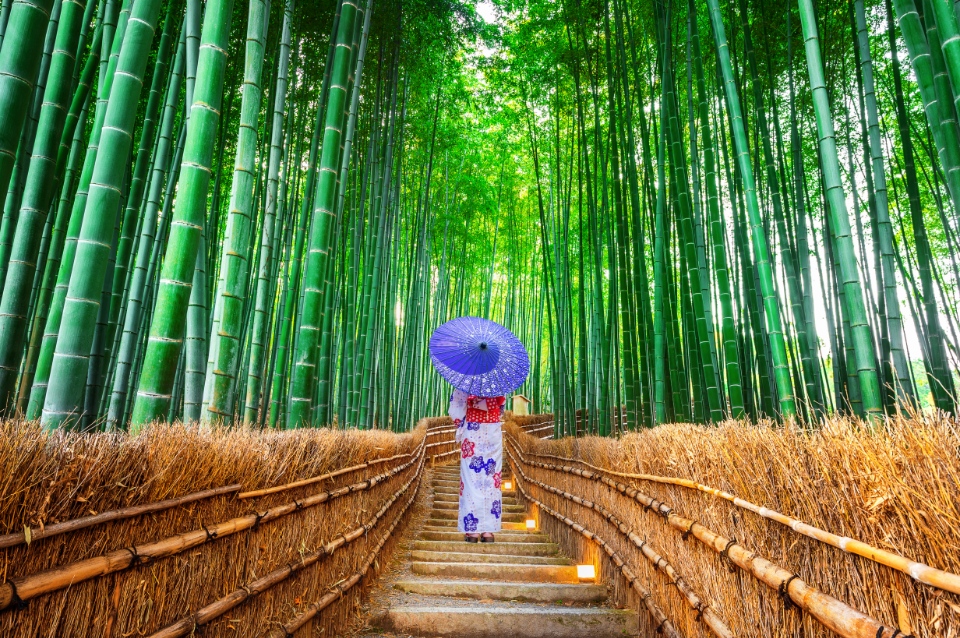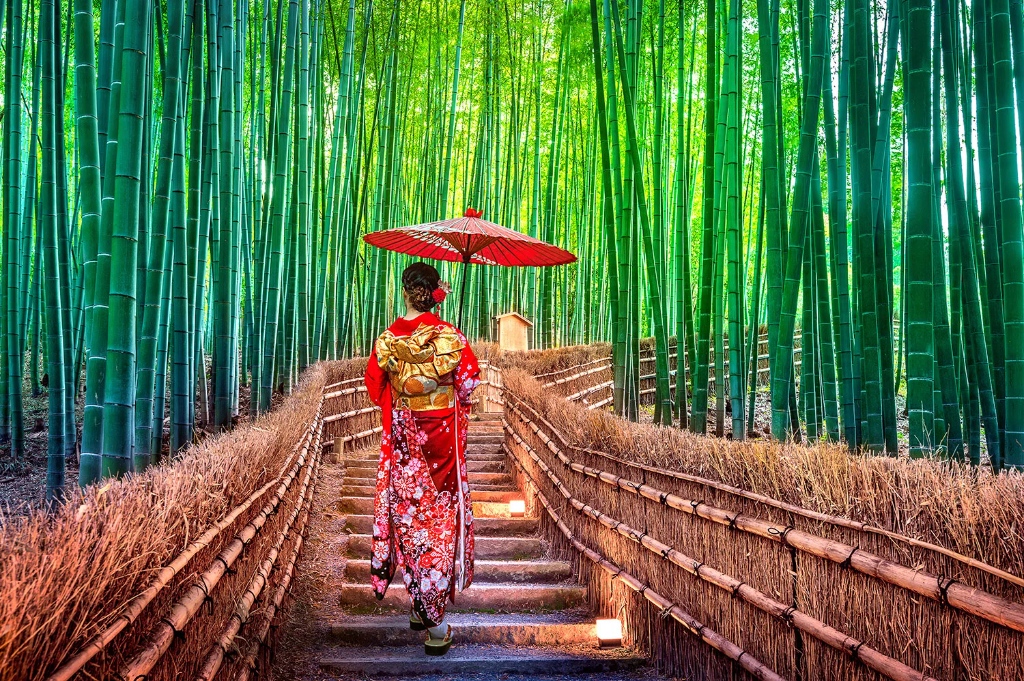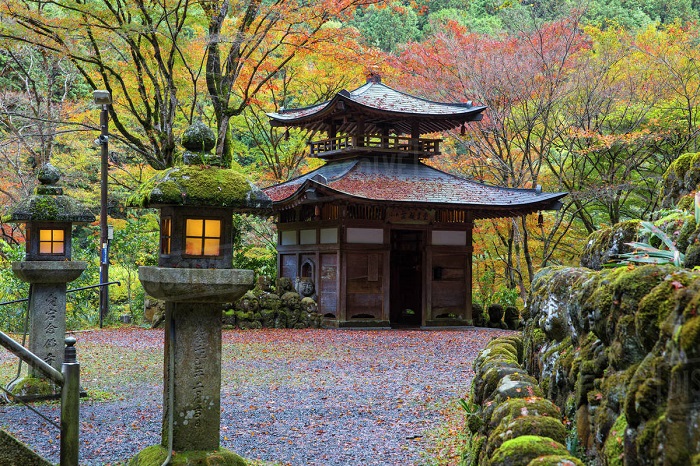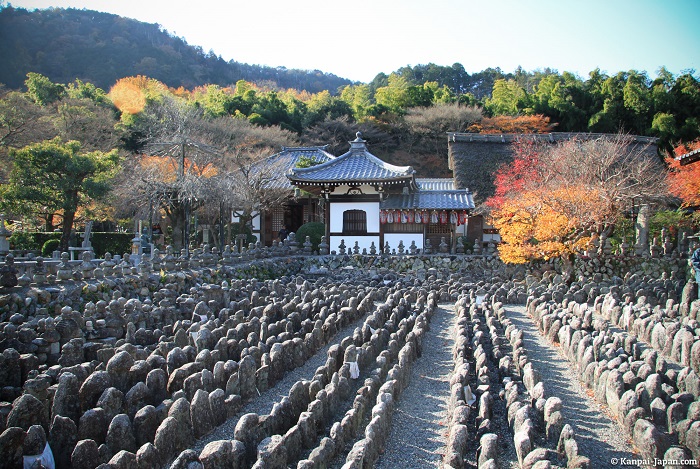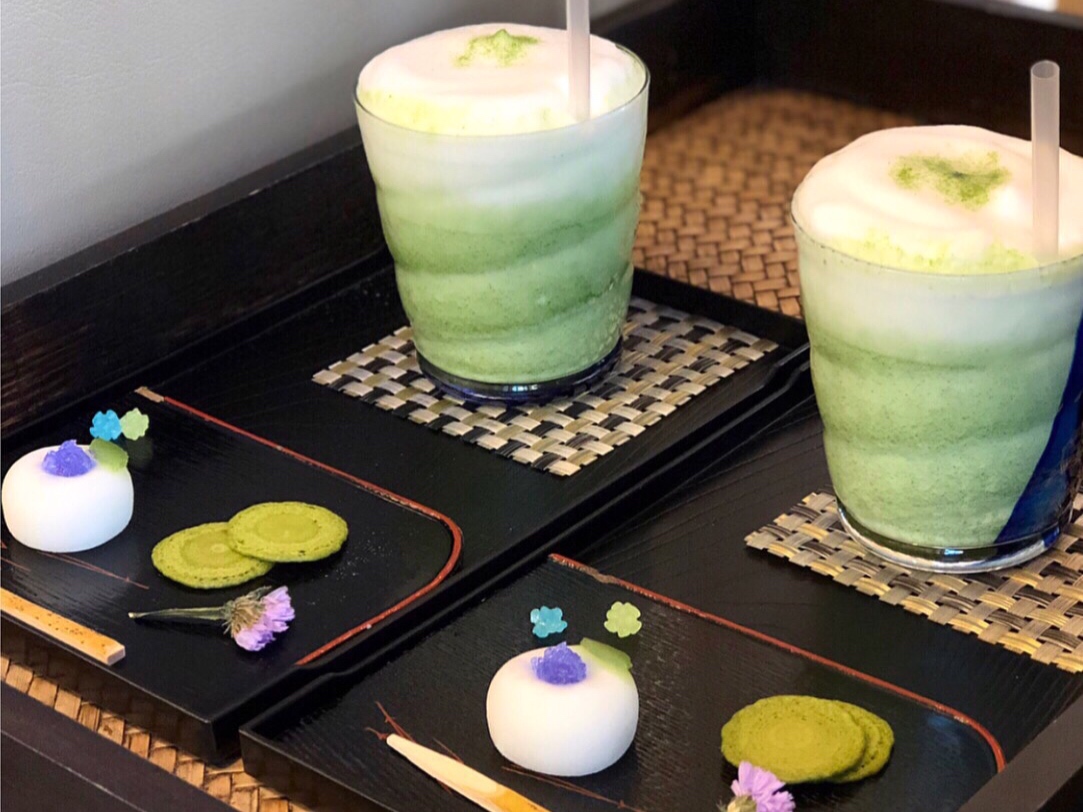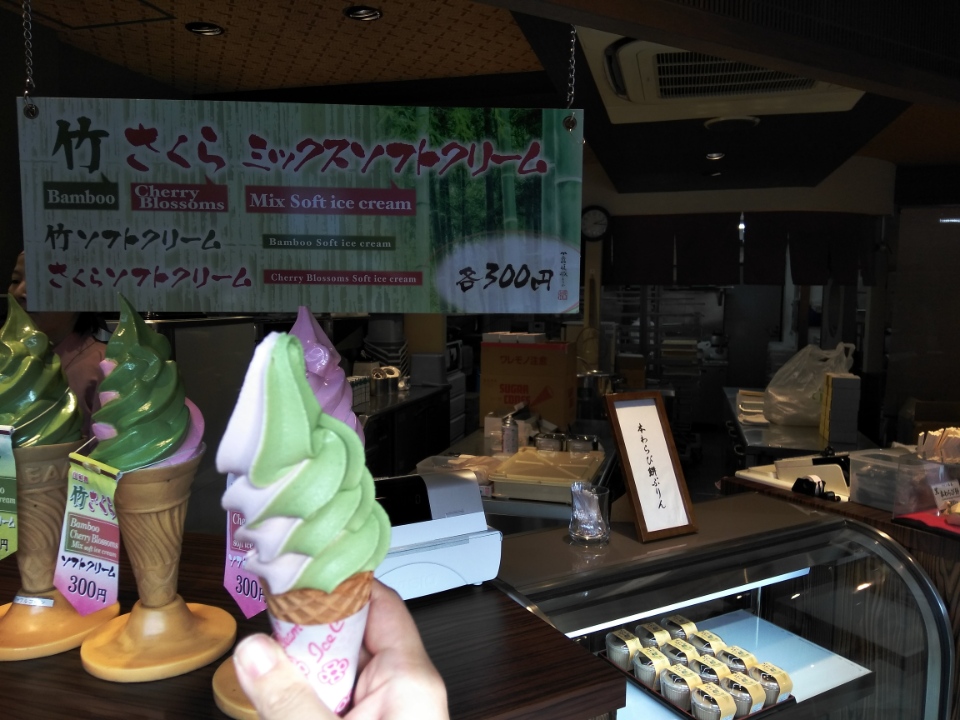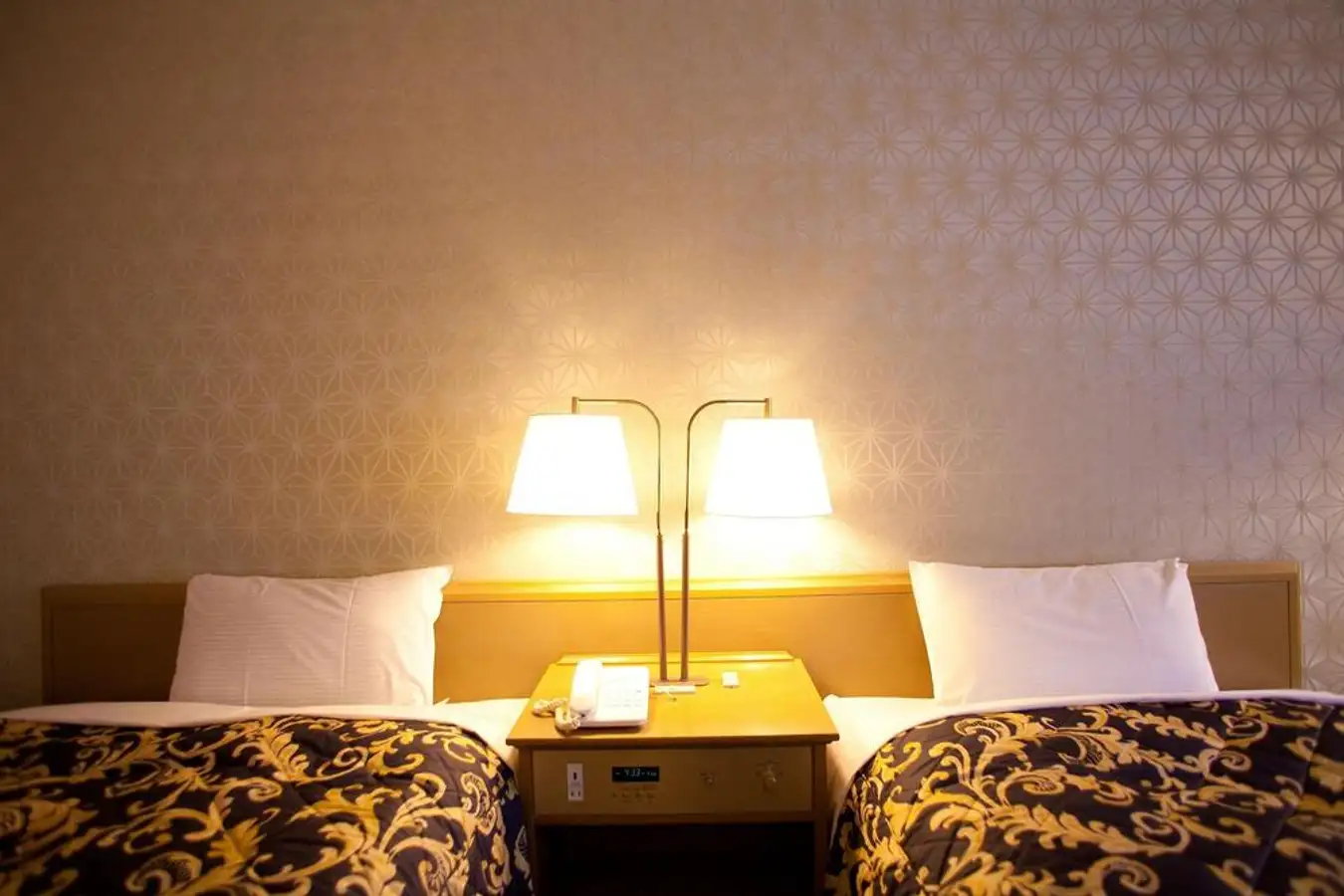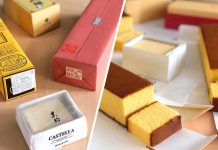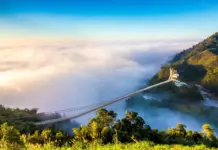Arashiyama not only offers wonderful natural scenery in the ancient capital of Kyoto. Besides, this is also a destination imbued with Japanese history and culture, creating a new and exciting discovery experience for visitors right from the moment they set foot in. If you plan to go to the land of the rising sun in the near future, follow us to learn about experiences and ways to travel economically. So, is Arashiyama worth visiting, how to visit Arashiyama, what to do in Arashiyama? Let’s check out our Arashiyama travel blog with the fullest Arashiyama travel guide from how to get to Arashiyama, best places to visit as well as top things to do in Arashiyama to help you maximize your trip as follows!
- 7 days in Japan itinerary: Suggested 1 week in Japan itinerary for what to do in Japan for 7 days
- The ULTIMATE Uji travel guide: Top attractions, best things to do in Uji Kyoto, Tips & MORE
- Kyoto itinerary 5 days: How to spend 5 days in kyoto perfectly?
- 19+ best sightseeing spots & most beautiful places to see in Japan: Mountains – Forests – Seas – Cities
- The ULTIMATE Gifu travel guide: Top attractions, best places to visit, stay & MORE
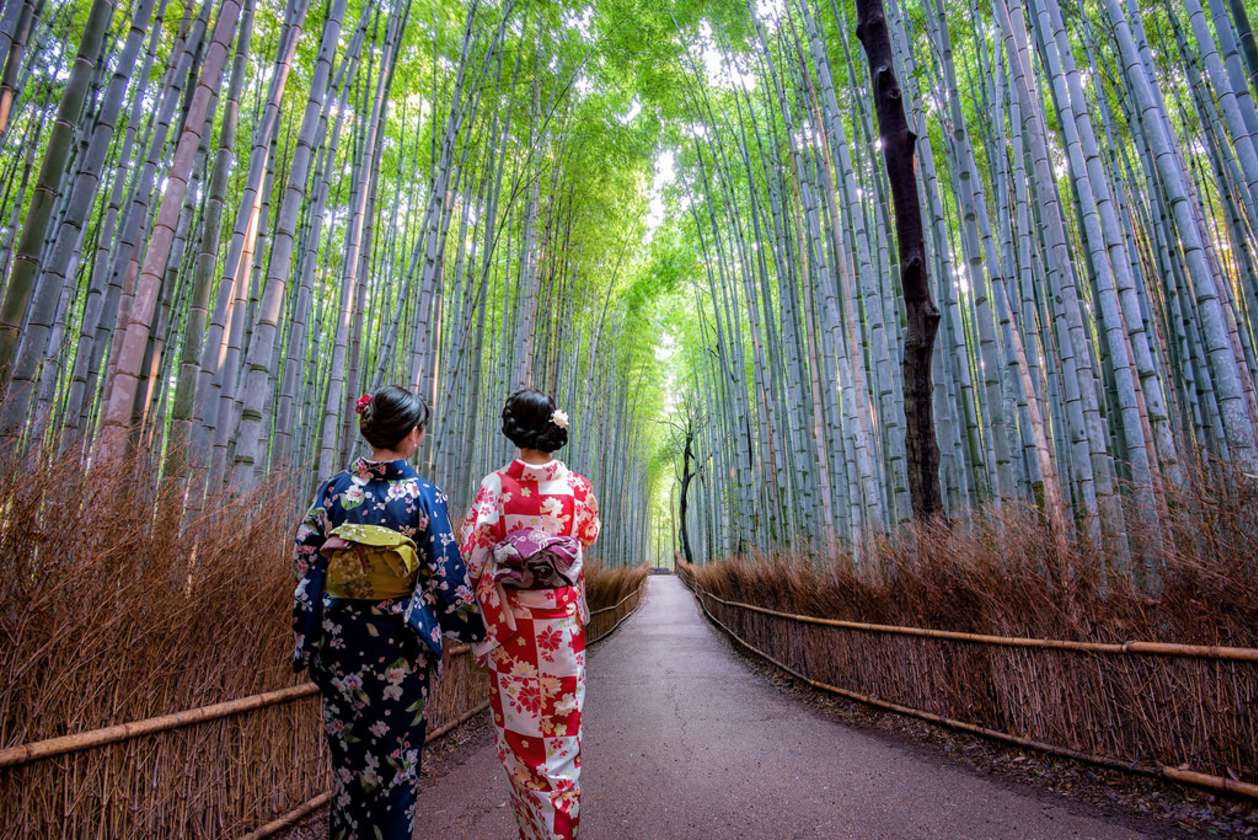

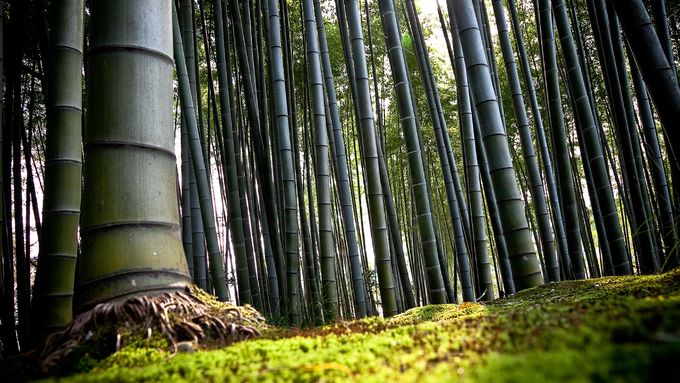
In a large area, millions of bamboo trees grow, creating a breathtaking scene. The green and quiet forest is like a world completely separate from bustling life outside.
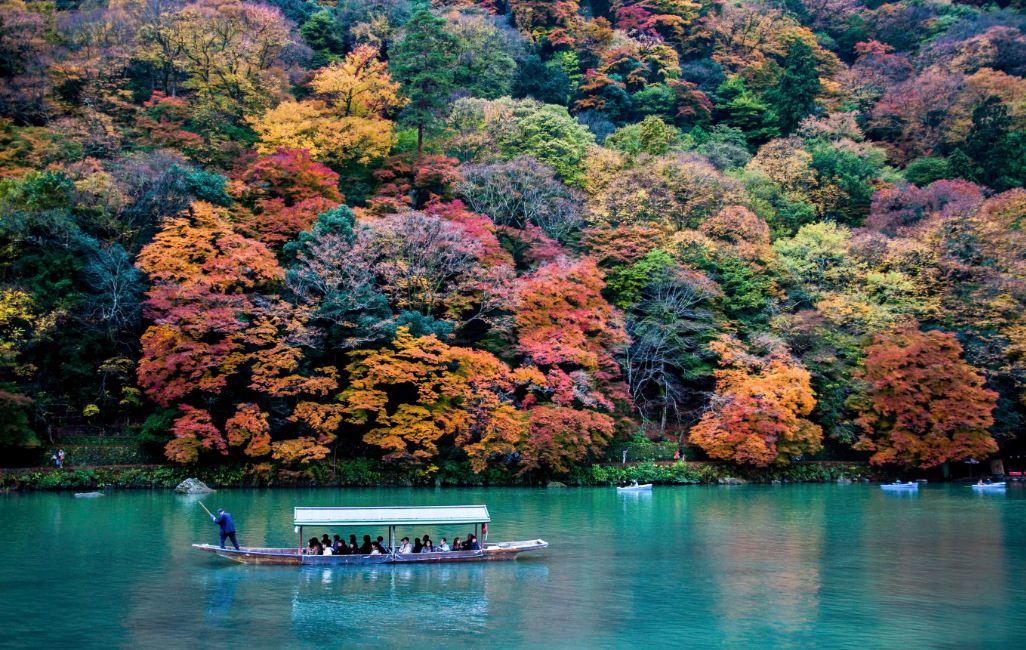
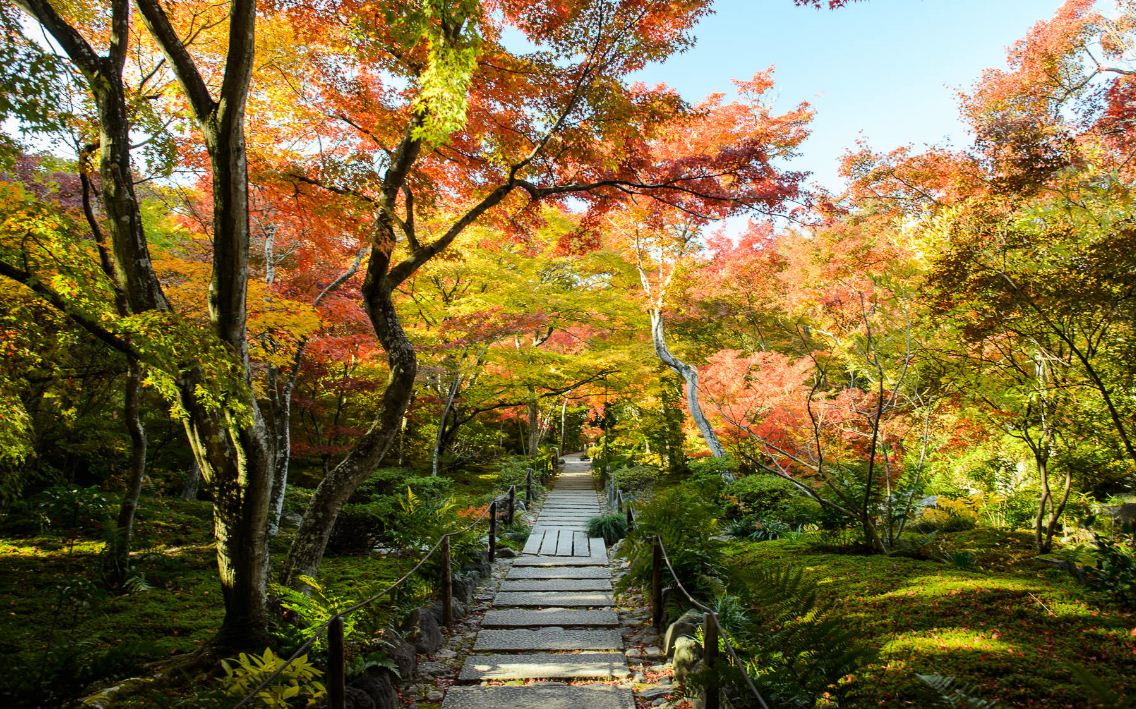
An overview of Arashiyama (#arashiyama travel guide)
In general, Kyoto is the ancient capital of Japan. There are many mountains here and many forests also. Therefore, the landscape is extremely beautiful and poetic as well. In my opinion, Kyoto not only retains the ancient architecture of beautiful and Japanese-style houses, but the suburban areas, many places are still very wild, with beautiful scenery, lots of trees and flowers, cool blue rivers and lakes. Perhaps that is why this ancient capital has such a beautiful and unique location, as rare as the Arashiyama bamboo forest tourist area as well as the park in Arashiyama district of Kyoto.
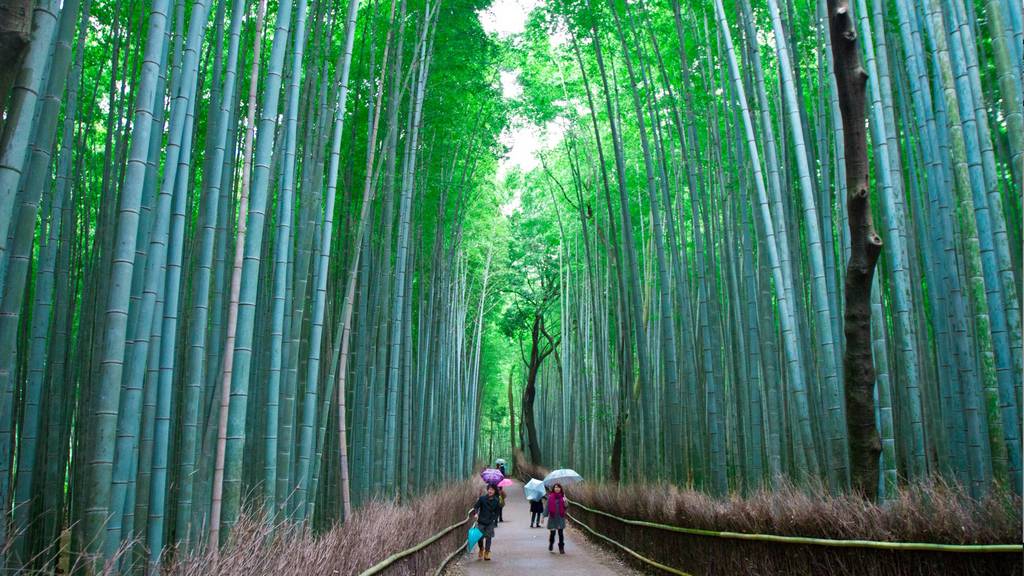
Arashiyama is located in the western suburbs of Kyoto. Since the Heian period (794-1185), this area has been a popular destination among aristocrats. They come here to feel the colors of nature or go on a boat trip. This area is considered one of the most amazing forests in Japan. Since this period Japanese people have chosen this place as their favorite vacation spot.
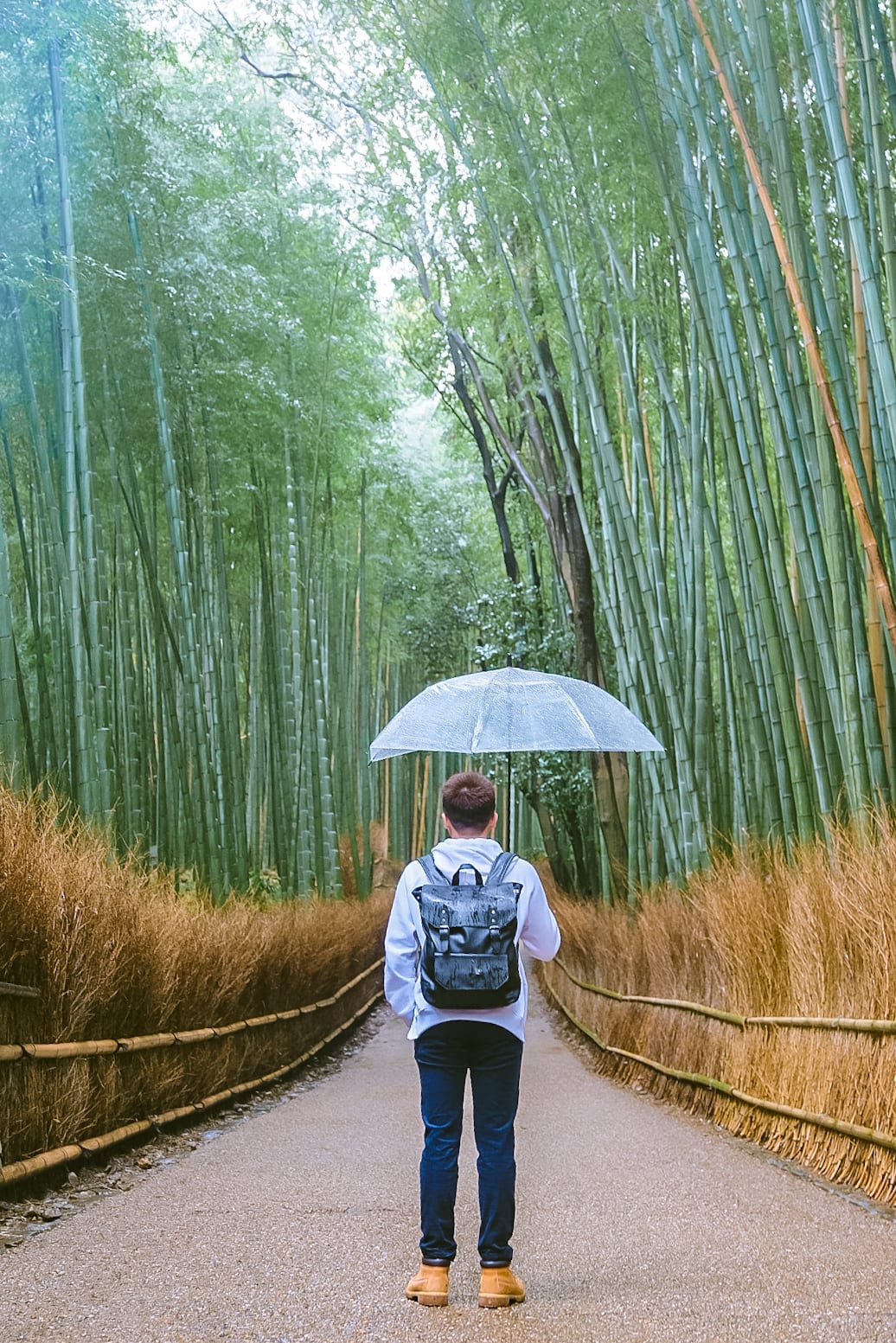
Bamboo is a very powerful plant and it plays an important role in Japanese culture. It is a symbol of prosperity, purity and innocence. The Japanese also use bamboo as handicraft materials such as baskets, bags, chairs, and cups.
The beauty of this emerald bamboo grove attracts the attention not only of tourists but also of Kyoto’s best artisans, who handcraft souvenirs and everyday items from this plant. Various products such as baskets, coasters and chopstick holders are made from harvested rows of smooth, round tree trunks and are available in many of the small shops along Arashiyama’s main road.
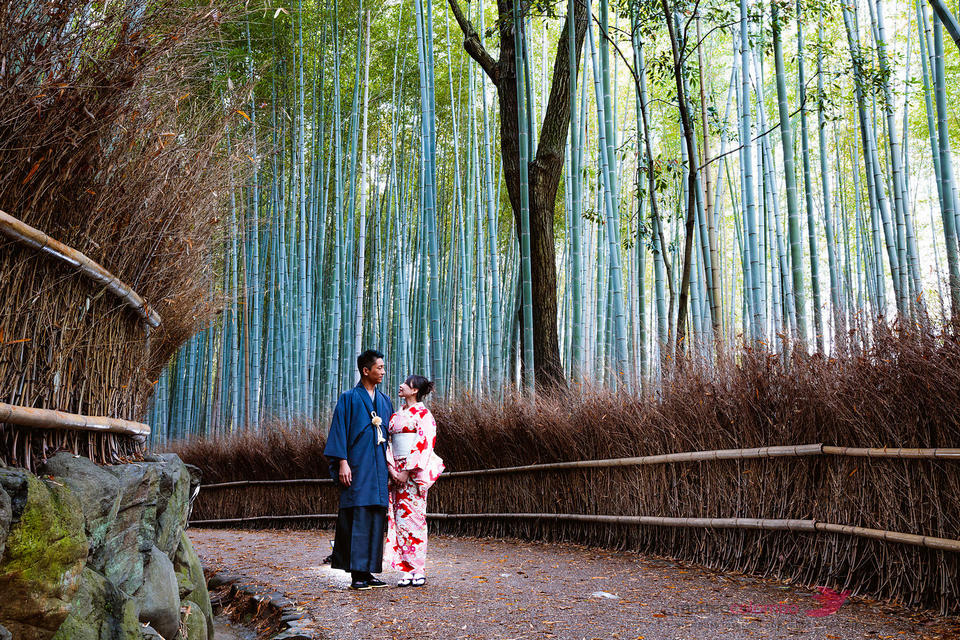
Located in the far northwest of Kyoto along the foothills of the Arashiyama (literally “Storm Mountain”) mountain range, the Arashiyama area attracts many visitors for its world-famous Japanese bamboo forests and beautiful changing scenery according to each season. There are temples, ancient royal villas and famous historical sites scattered around here, many of which are National Treasures or have been recognized as World Heritage Sites. The entire Arashiyama area has been designated a a Place of Scenic Beauty by the Japanese government.
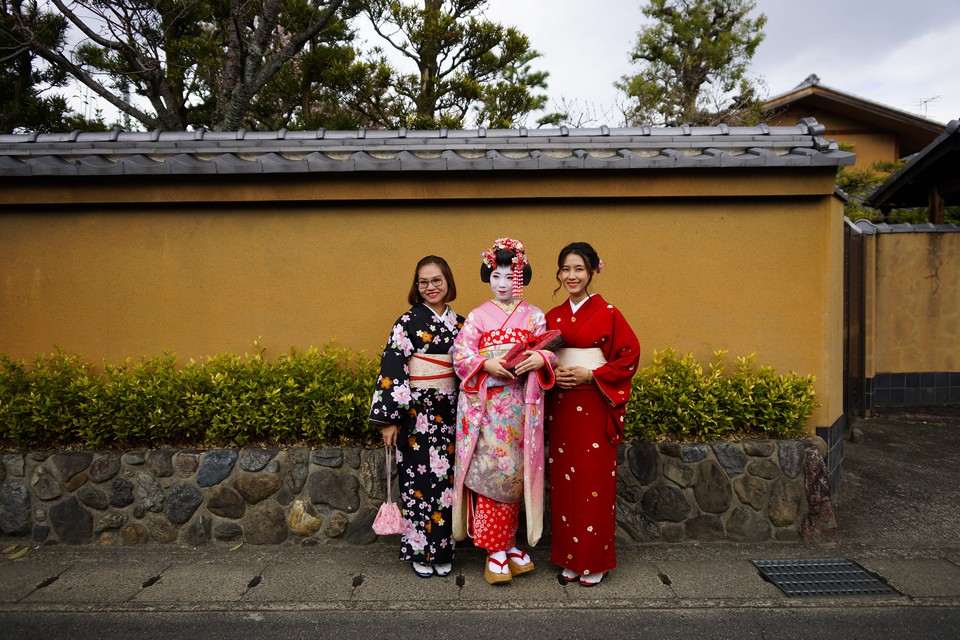
This region attracts many tourists thanks to its diverse and beautiful natural beauty. The district’s characteristic is the mountain located across the famous Oi River in Japan. The atmosphere here is always fresh and cool, creating favorable conditions for tourists to visit.
In addition, Arashiyama is also a famous place for many cultural works of high historical value that have been preserved for a long time. Therefore, for those who love the beauty of Japan from culture to landscape, this will be a great tour and discovery option not to be missed.
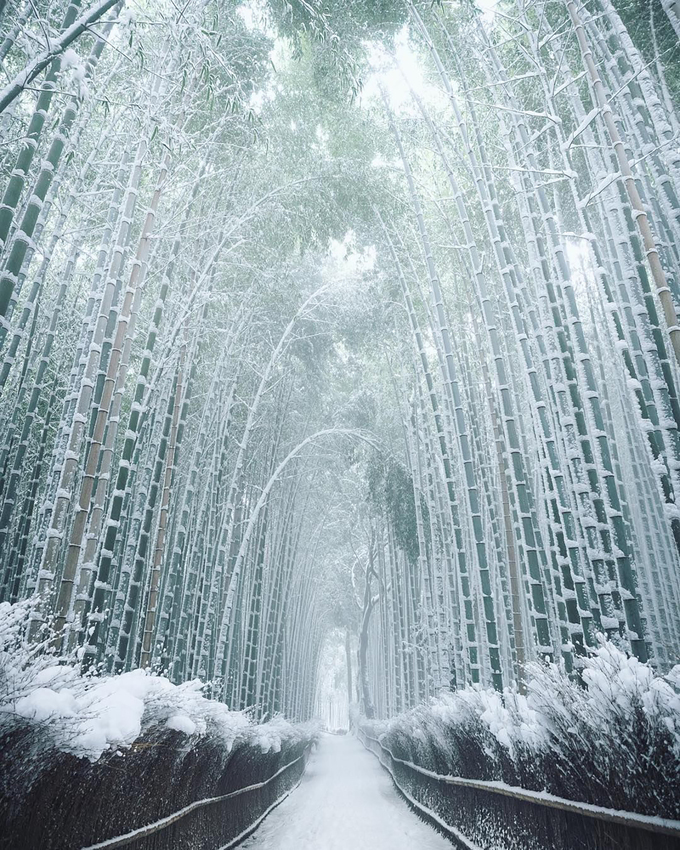
Located in the central Arashiyama area, Togetsukyou Bridge was built more than 1,000 years ago during the Heian period and is a cultural symbol here. There are many small shops, restaurants and other attractions nearby, including Tenryuji Temple, Arashiyama’s famous Sagano Bamboo Forest.
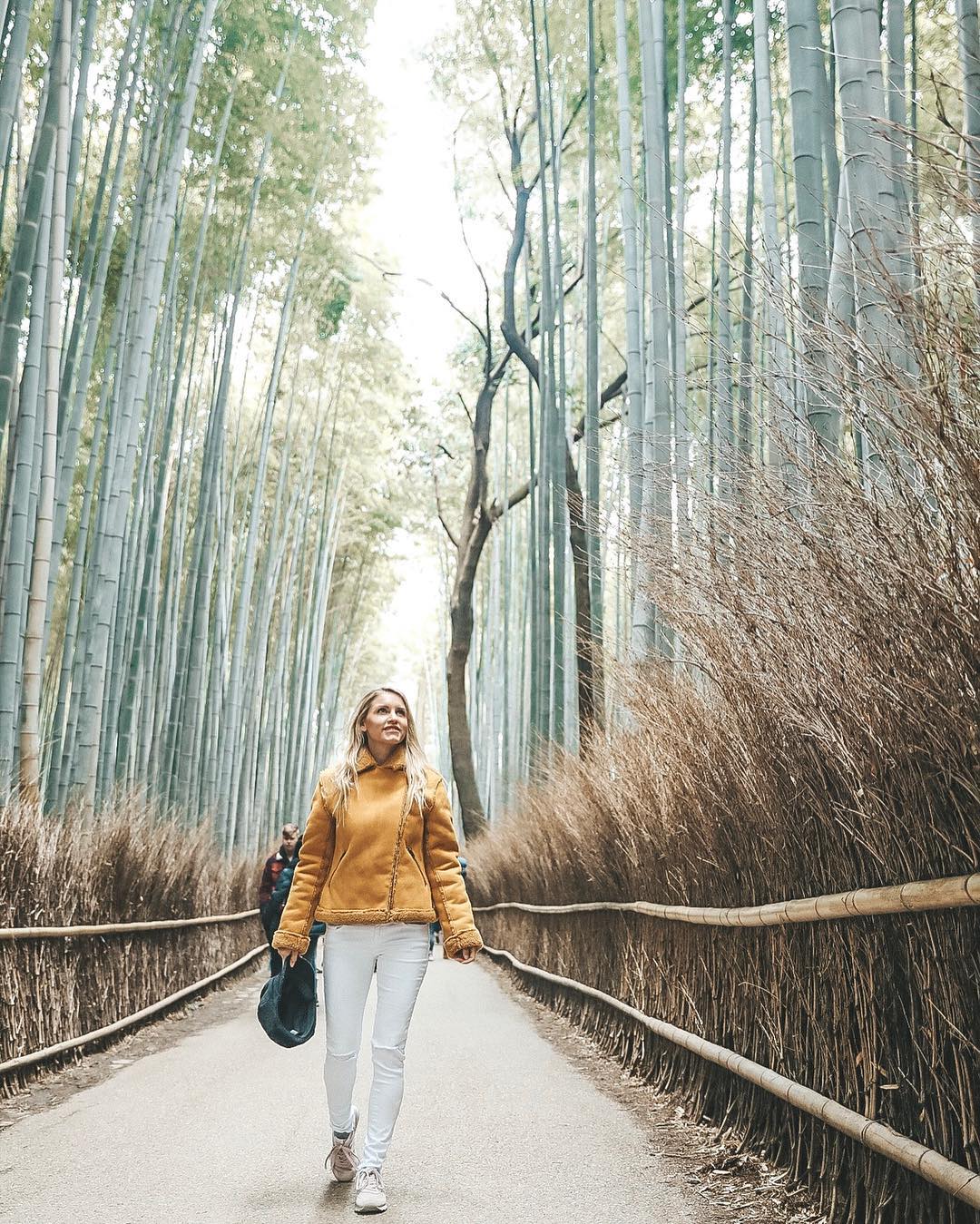
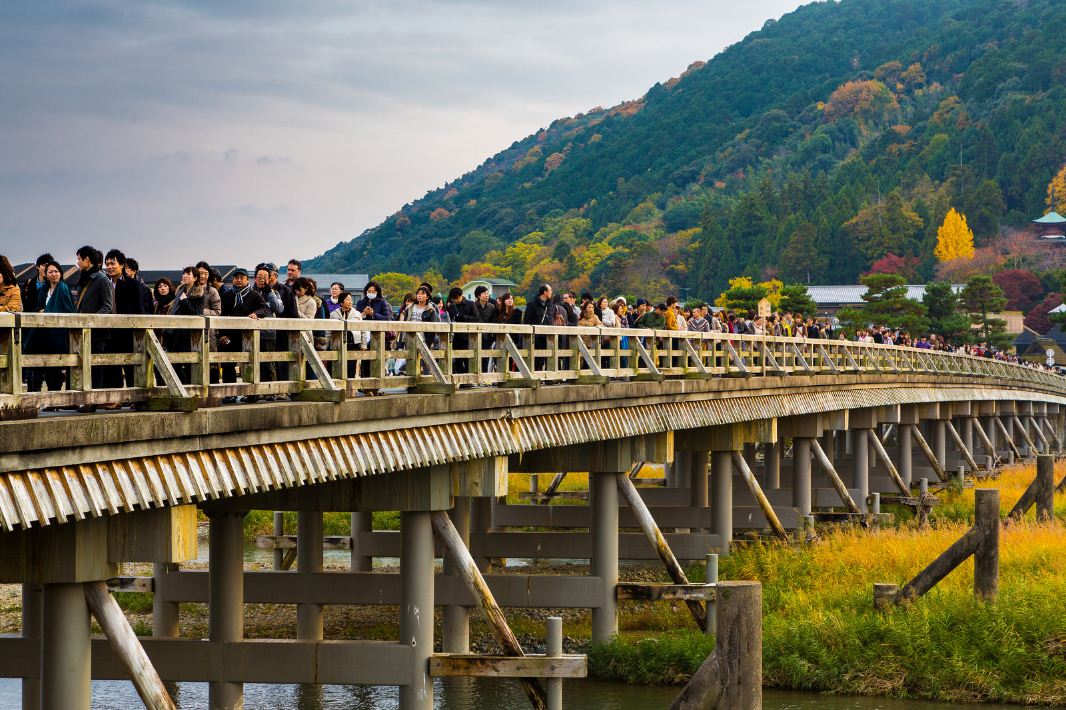
Kyoto Bamboo Forest is open 24/7 and there is no entrance fee. However, if you want to visit nearby Tenryū-ji Temple, you will have to pay an entrance fee of 500 JPY. The temple is open from 8:30 a.m. to 5:30 p.m.
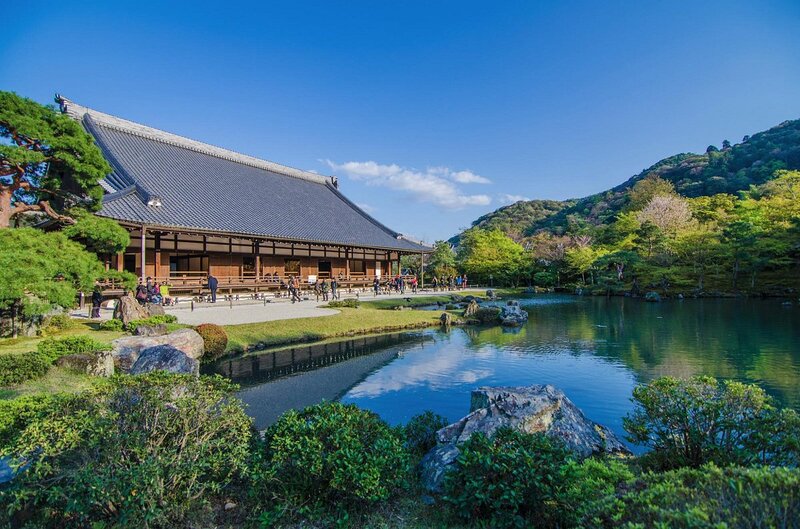
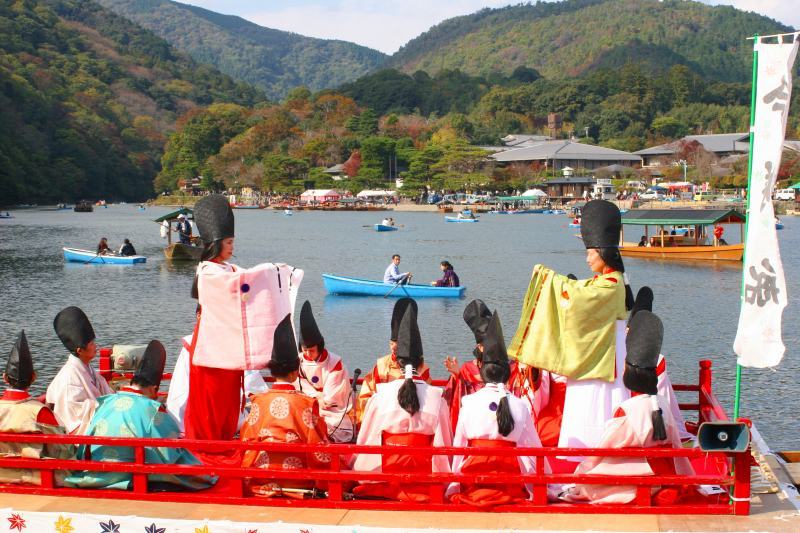
How to get to Arashiyama Bamboo Forest? (#arashiyama guide)
If you are already in Kyoto city, the way to get to the Arashiyama bamboo forest is actually very easy to go. Let’s say for example that you travel from other prefectures to Kyoto by Shinkasen bullet train and book hotels in the Kyoto Station area.
Go to central Kyoto at Kyoto Station, take line 33 to Saga-arashiyama station to go to the bamboo forest (or buy a bus ticket at Kyoto Station to go anywhere).
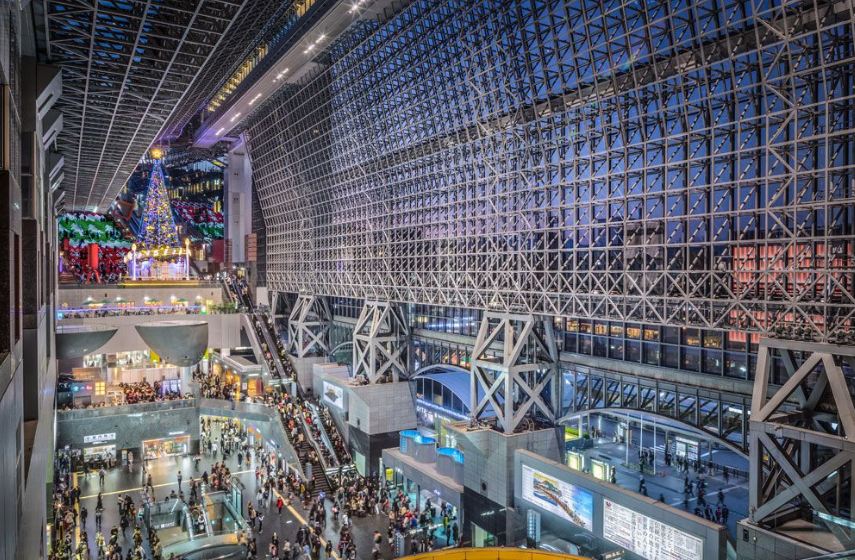
Time: Maybe one morning is enough, but you should go early (to avoid seeing only human heads).
Therefore, when visiting the bamboo forest, visitors often buy bus tickets to go all the way to the places they like to visit.
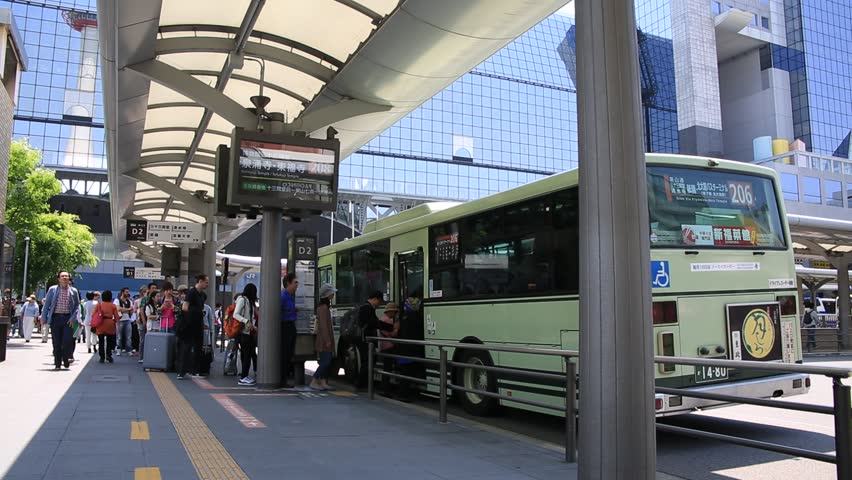
And if you visit the bamboo forest, you will definitely go on a tour of nearby locations before the day ends. Therefore, you should buy train or bus tickets to go.
Note: There are places that can only be reached by bus and not by train (Japan Rail Pass cannot be applied) – for example, going to the Golden Temple of Kinkaku-ji.
There are also many people who travel to Japan, only to have fun in Osaka and take the opportunity to go to Kyoto, so they go for a day and then return to Osaka (only 40 minutes by train).
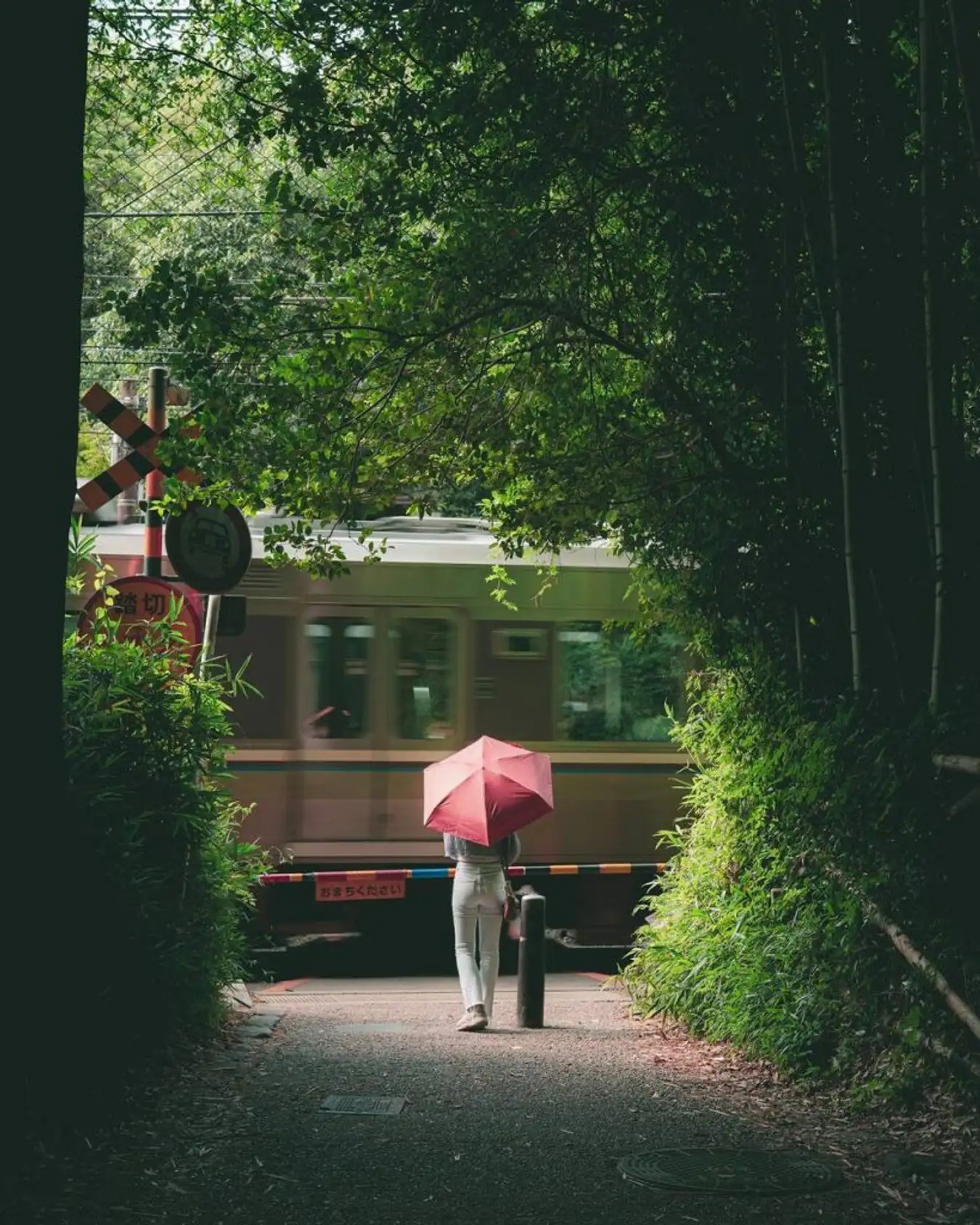
From Kyoto station, you can take the JR San-in or Sagano line (included in the JR Pass) to Saga-Arashiyama station. The train trip lasts about 20 minutes, including the following stops:
- Umekoji-Kyotonishi Station
- Tambaguchi Station
- Nijo Station (near Nijo Castle)
- Emmachi Station (connects with bus 102 to Kinkaku-ji temple)
- Hanazono Station
From JR Saga-Arashiyama Station, you can catch a bus that leaves about every seven minutes to visit the bamboo forest, or walk about 15 minutes. In addition, trains departing from Hankyu Arashiyama station do not apply JR Pass. Next to Saga-Arashiyama Station is the red brick building of Saga Torokko Station, from which you can take the Sagano Scenic Railway, which crosses a gorge with beautiful views along the Hozu River.
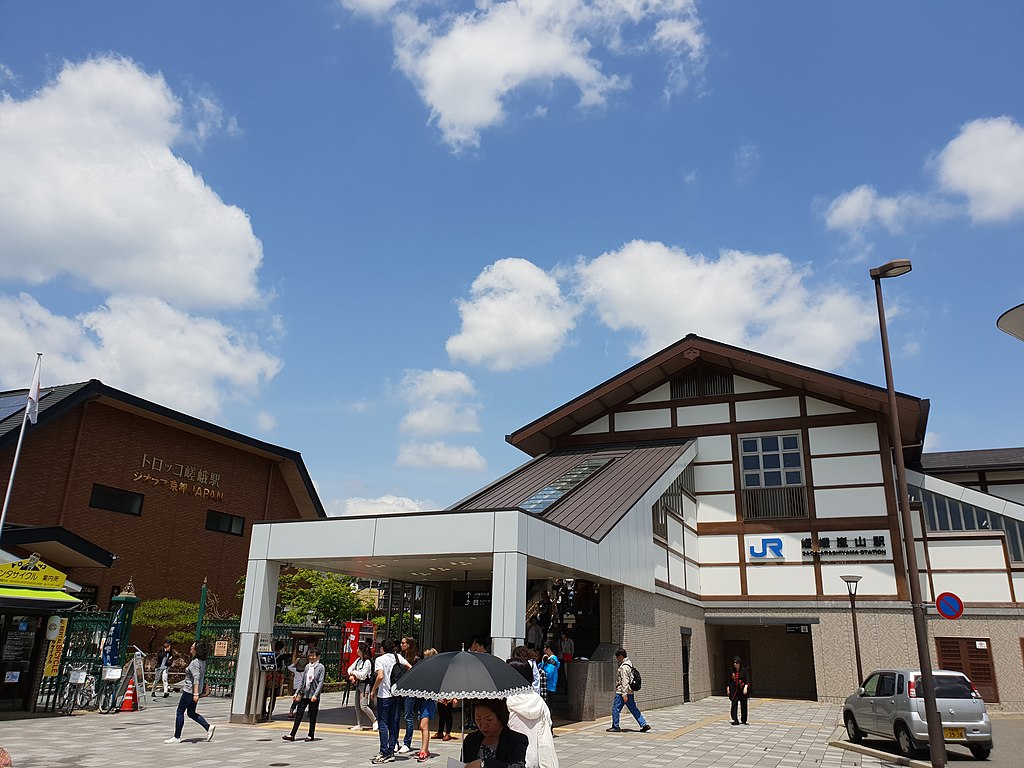
Suggested Arashiyama Kyoto itinerary 2 days 1 night (#arashiyama travel blog)
Kyoto Station – Emmachi Station (20 minutes) then take bus number 205 or number 204 to Kinkakuji Michi station (about 10 minutes) then walk 3 minutes to get to the Golden Temple.
However, the simplest way for those who are less experienced and not very confident in English or Japanese is to go to Kyoto Station, then buy a bus pass to go all day (you can go anywhere you like) for 600 yen. Then ask the bus staff which temple you want to go to, which bus number to get in the bamboo forest… and they will show you the bus number. Just get in the bus and sit down and when you get there, get off and walk into the bamboo forest (remember to keep checking Google Map to see if it’s coming).
If you go to the bamboo forest first and then go to the Golden Temple: Then you can take the train to check in to the bamboo forest, then get off and hop on the bus to go to the Golden Temple. From the Golden Temple, take the bus back to the station and hotel.
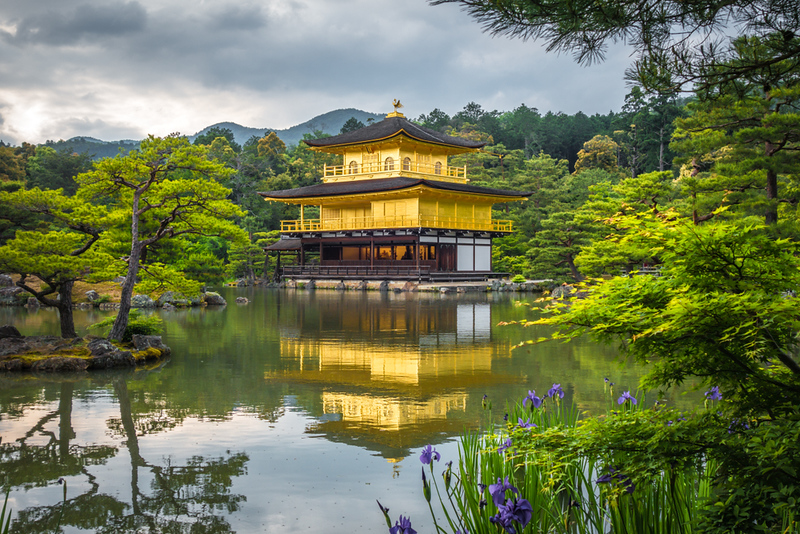
If you depart from other prefectures to Kyoto to visit the bamboo forest, Golden temple, Fushimi Inari Shrine… then you can make the following itinerary (this itinerary covers many beautiful places in Kyoto):
When you arrive at Kyoto Station, check in at the tallest Kyoto Tower in the city and the JR Kyoto Station main gate – to let your friends know you are in the land of the rising sun. Then choose the following combos one by one:
On the first day, take bus number 205 from Kyoto Station to Gojozaka station, get off, walk about 5 minutes to the Ninenzaka slope, then check-in at locations including: Kiyomizu-dera Temple (A place to see red leaves or cherry blossoms, Yasaka temple, Kodaiji Temple. Then wander to the famous geisha Gion Shijo old town, stroll Kamo river, and stroll Kawaramachi street.
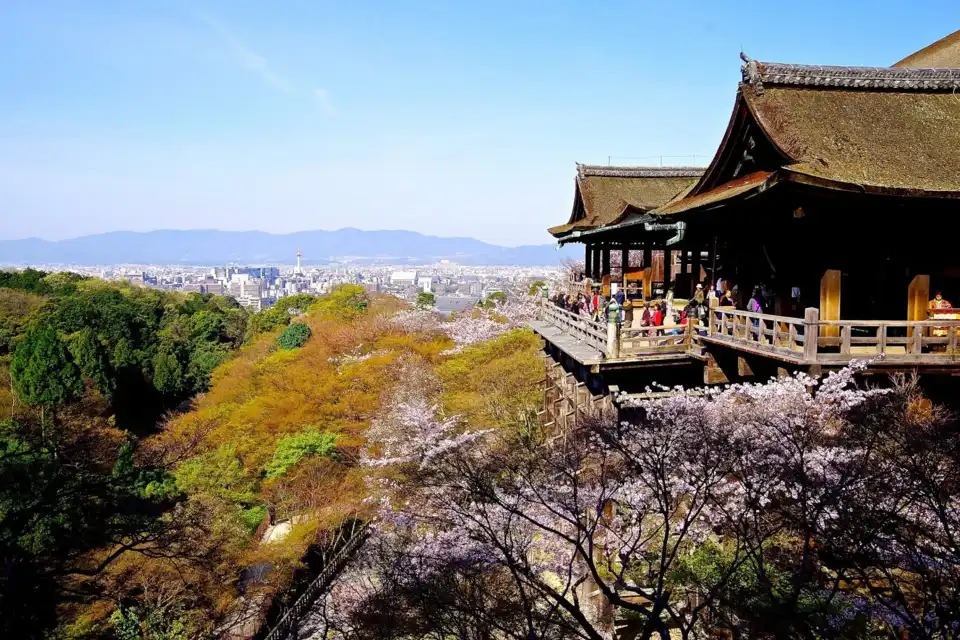
The next day, from Kyoto Station, take line 8-9 to the stop of the thousands of red torii gates Fushimi-Inari shrine or take line 33 to Saga-Arashiyama station (this is the station to go to Kyoto bamboo forest – see the map). Then, from the bamboo forest, you take the bus to go to the Golden Temple and get off at Kinkakuji Michi station (7-8km away as described above).
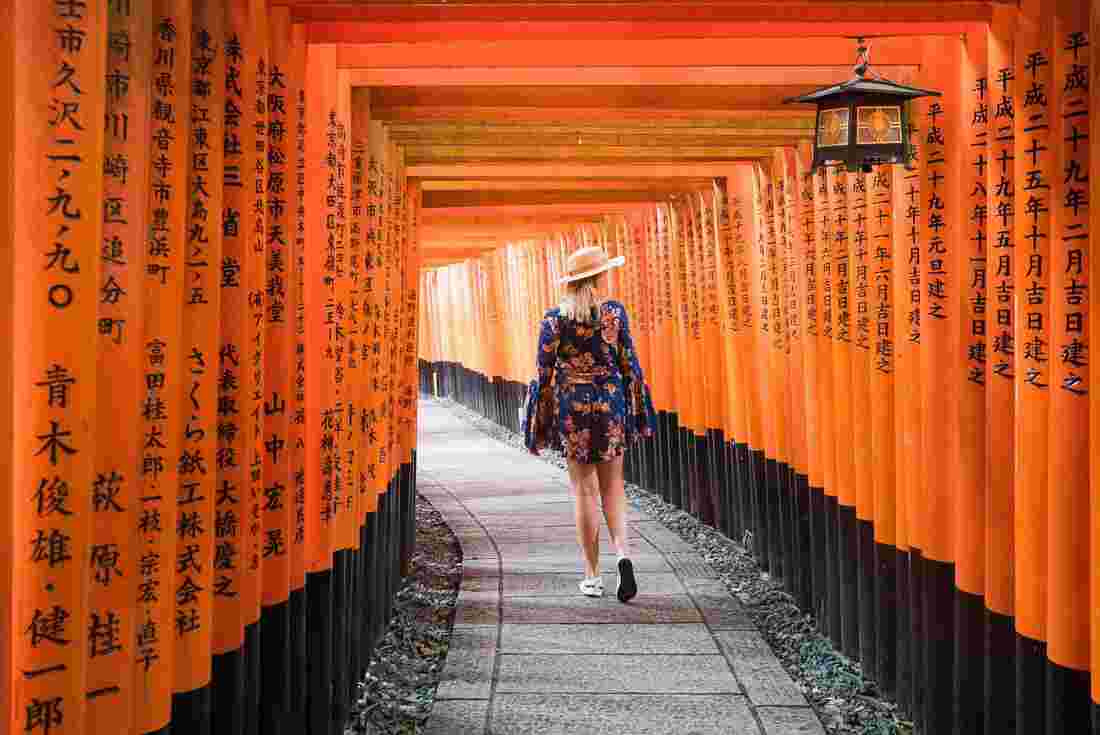
In Kyoto, in addition to the bamboo forest, there are also about 14 beautiful places that can be checked in virtually. So you can choose 2 more combos if you have more time.
The entrance to the Arashiyama bamboo forest is a short walk from Saga-Arashiyama Station train station, and the forest path winds up the hillside with each corner offering better views of the forest. Along the way, you’ll have the opportunity to see and photograph traditional Japanese houses, independent shops and small eateries, away from the noisy crowds.
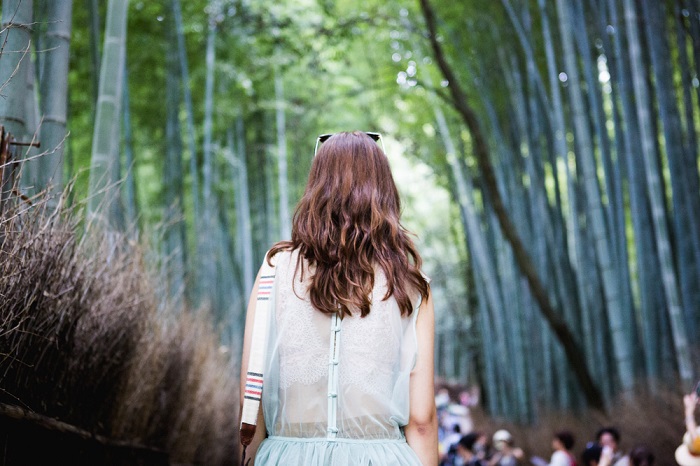
What and top things to do in Arashiyama?
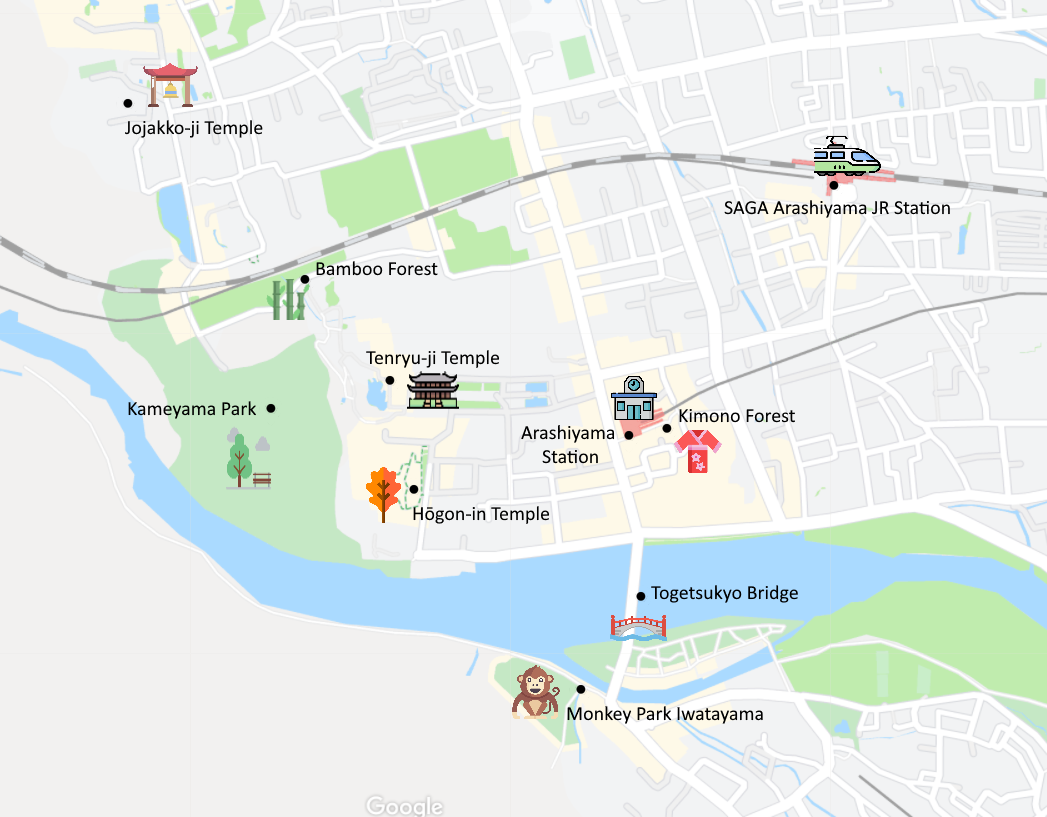
However, because in Kyoto there are so many places, cultural sites, and beautiful scenic areas to visit, a 1-day itinerary is a bit tiring and a waste of opportunity. If you only spend 1 day, you won’t have time to go to the must-go places that many people check out, but you can only go to 1-2 places. Therefore, according to my experience, you should stay 1 night in Kyoto, which means the schedule will have 2 days and 1 day to go to some beautiful places.
Specifically, on the first day, you can visit the Fushimi Inari Shinto Shrine (also known as the thousands of vermilion torii gates). Then, when you’re on the road, go up to Kiyomizu Dera for sightseeing.
Then return to Kyoto Station to sleep at a hotel near the station, take the opportunity to explore places such as the old town of Gion (like Hoi An in Vietnam), Kyoto Tower, Toji Temple… and then the next day go to the Golden Temple and Arashiyama bamboo forest too.
If you go to the golden temple first, then the bamboo forest: Because the route to the golden temple does not have a train like going to the bamboo forest, you has to go by bus. Then, from the golden temple Kinkaku-ji, continue to detour to Arashiyama district to check in and live virtually in the bamboo forest and watch the Katsura River.
Stroll along the bamboo forest path
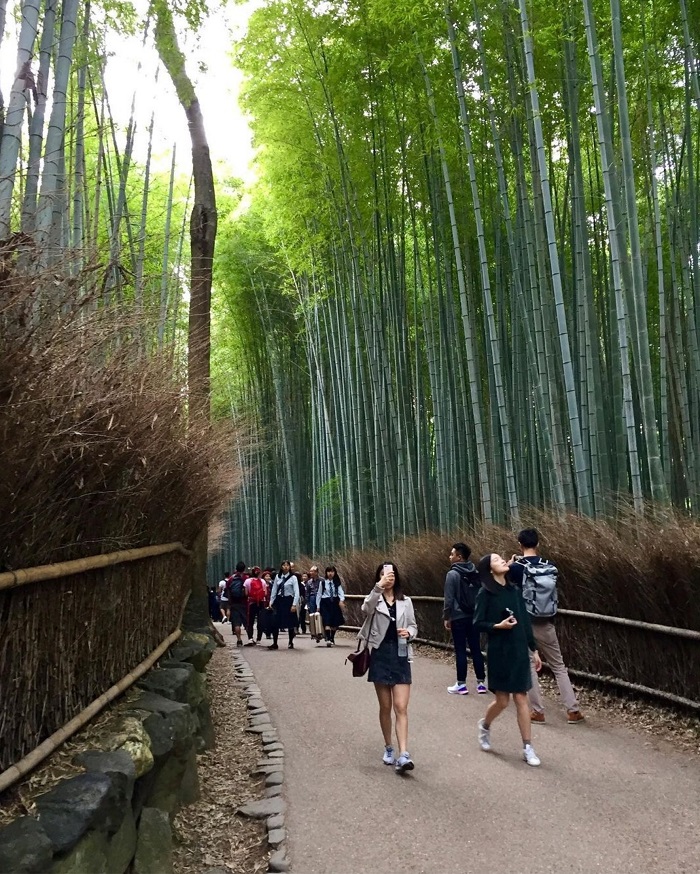
Sagano Bamboo Forest, also known as Arashiyama Bamboo Forest, is one of the most photographed sights in Kyoto. This natural gem possesses a very different atmosphere under the towering bamboo shadows, where you will feel like you are lost in nature even though you have been in a bustling open area before.
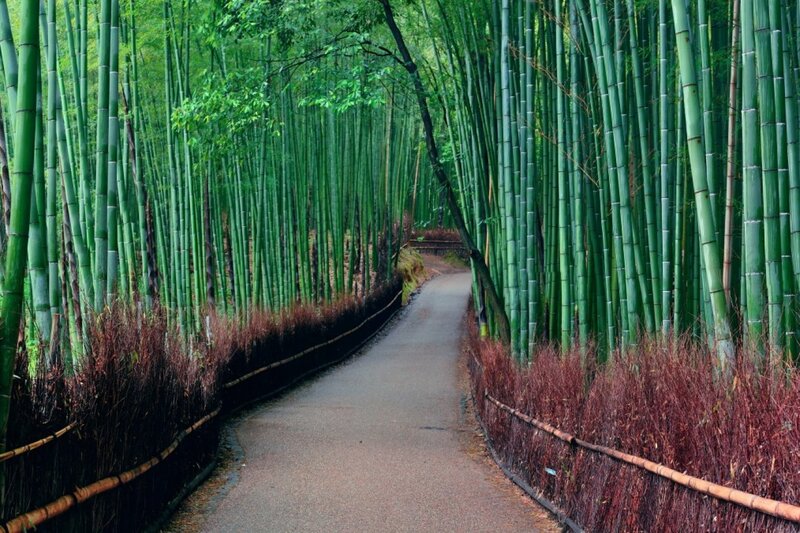
The road has a total length of 600m, surrounded by Torokko Arashiyama station, Tenryuji temple, Okochi Sanso… The sound of rustling bamboo in the Arashiyama bamboo forest has been honored by the Ministry of the Environment as one of the “The 100 Soundscapes of Japan”. Depending on the season of the year, the road can be quite crowded, we recommend that you can choose to take a rickshaw through the forest to have a more unique experience on your journey to explore Kyoto.
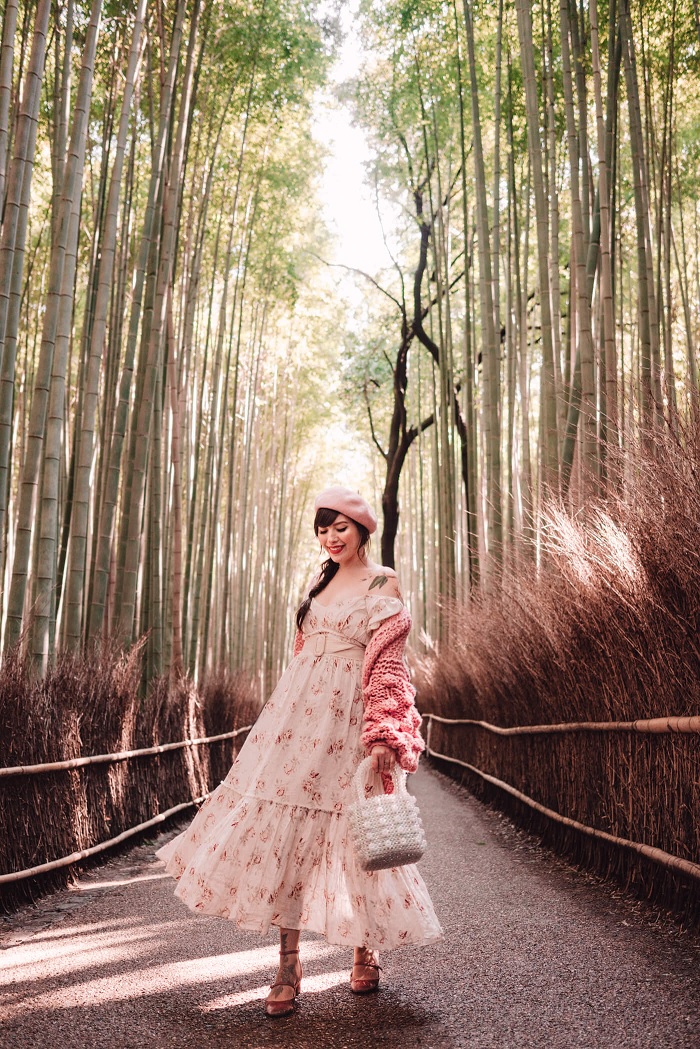
When it comes to the most beautiful and impressive sights in the suburbs of Kyoto, the Arashiyama bamboo forest is certainly not too strange. With a total length of 600 meters, the path is covered on both sides with lush green bamboo plants.
Thanks to that, it creates a very special beauty and makes anyone flutter when they visit. Visitors can admire the scenery, enjoy the fresh air from the bamboo forest and comfortably check in “virtual life” in this rare scene.
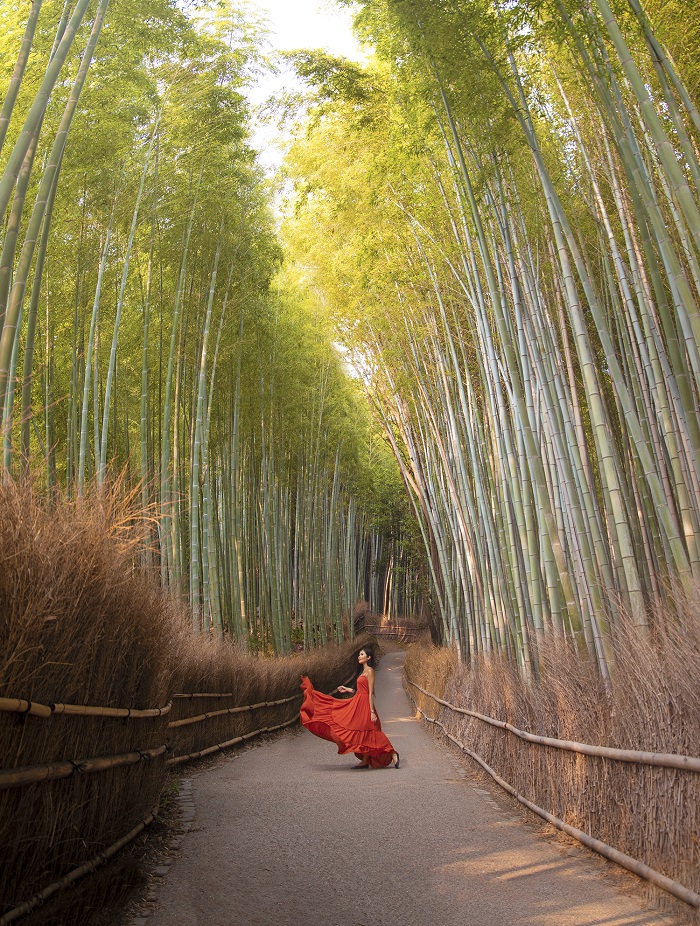
Wearing kimono and stroll the bamboo grove: In Kyoto, especially Arashiyama, you should often take photos with traditional Japanese Kimonos. With a full day rental price of about 3,000 yen and if hair and makeup is also 5,000 yen, you can freely play the role of professional Japanese actors.
Tour the bamboo forest on a traditional rickshaw (Jinrikisha)

Visitors can enjoy the magical landscape of the bamboo forest from a different perspective with new experiences when sitting on a rickshaw. The rickshaw will be pulled by a local man called shafu. These rickshaw pullers wear traditional costumes and are professionally trained. Therefore, they can guide guests to local roads rarely seen by tourists, as well as introduce interesting information about Arashiyama.
Visit Tenryuji temple
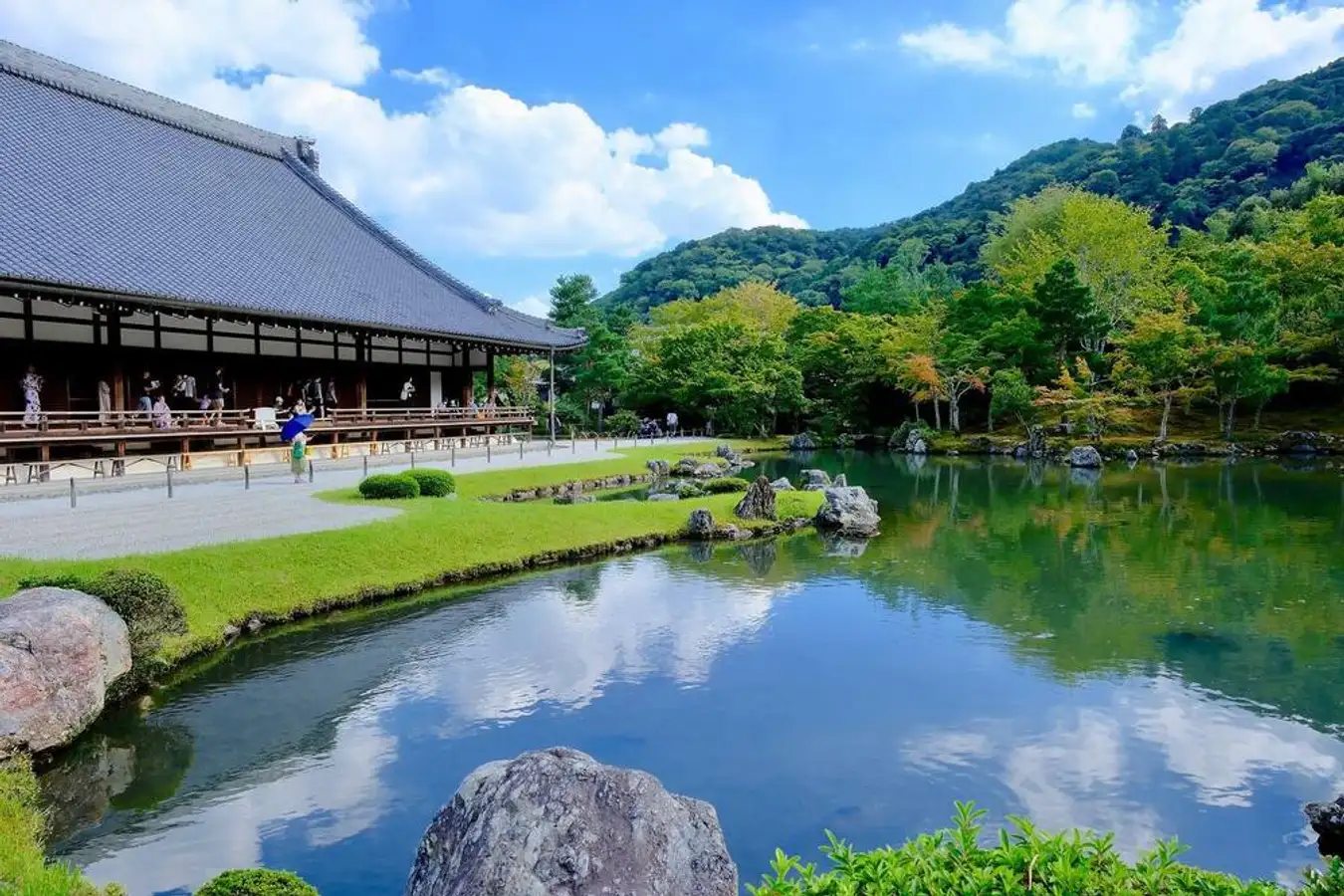
Tenryuji is a typical Japanese Zen temple with gentle, delicate traditional beauty. Built in 1339, after many renovations, the pagoda was recognized by UNESCO for its cultural significance and long history.
Tenryu-ji has been recognized as a UNESCO World Heritage Site, a true cultural and historical treasure of the Arashiyama district in Kyoto. Founded in 1339, the temple is now one of the headquarters of the Rinzai School of Zen. The name “Tenryu-ji” was suggested after a dream by Ashikaga Tadayoshi (brother of shogun Ashikaga Takauji) of a golden dragon rising into the sky from the river just south of the temple. The beautiful landscape garden of Tenryu-ji and Sogen Lake, famous for its use of shakkei (borrowed scenery), was designed by Muso Soseki, a prominent Zen master. Tenryu-ji is also known for its Cloud Dragon ceiling painting in the Dharma Hall and for traditional Buddhist activities such as meditation and copying sutras.
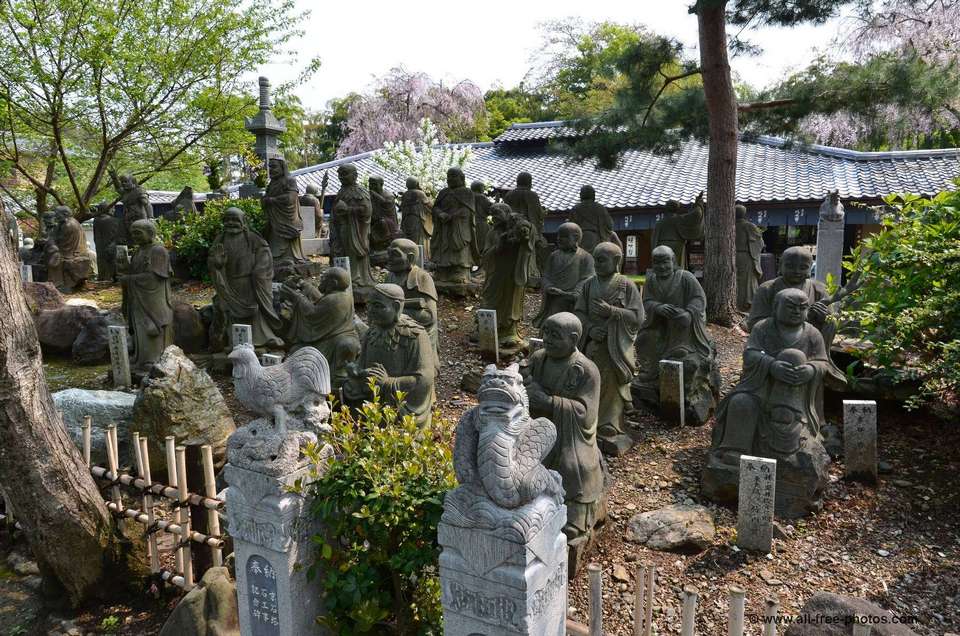
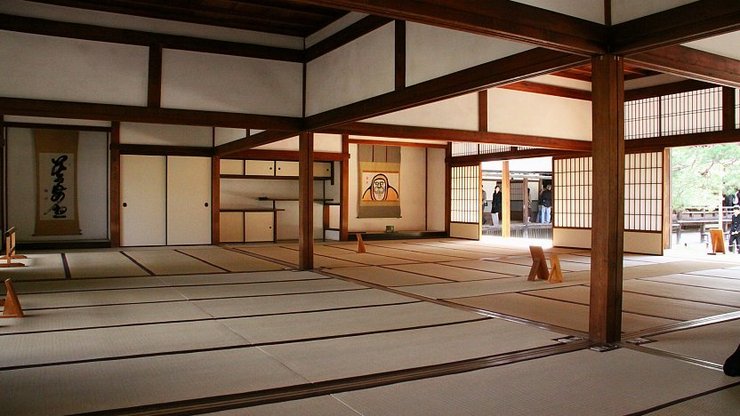

Tourists, in addition to worshiping, can also visit buildings on the temple grounds such as Hatto Dharma Hall with its famous dragon drawing. In addition, you can also enjoy the peace and beautiful scenery with green trees and poetic pond. Visitors also have the opportunity to experience meditation and copying sutras at the temple, which is very meaningful. You should note that the entrance ticket to visit the temple is 500 Yen – 800 Yen.
Hozugawa River Cruise (Hozugawa Kudari)
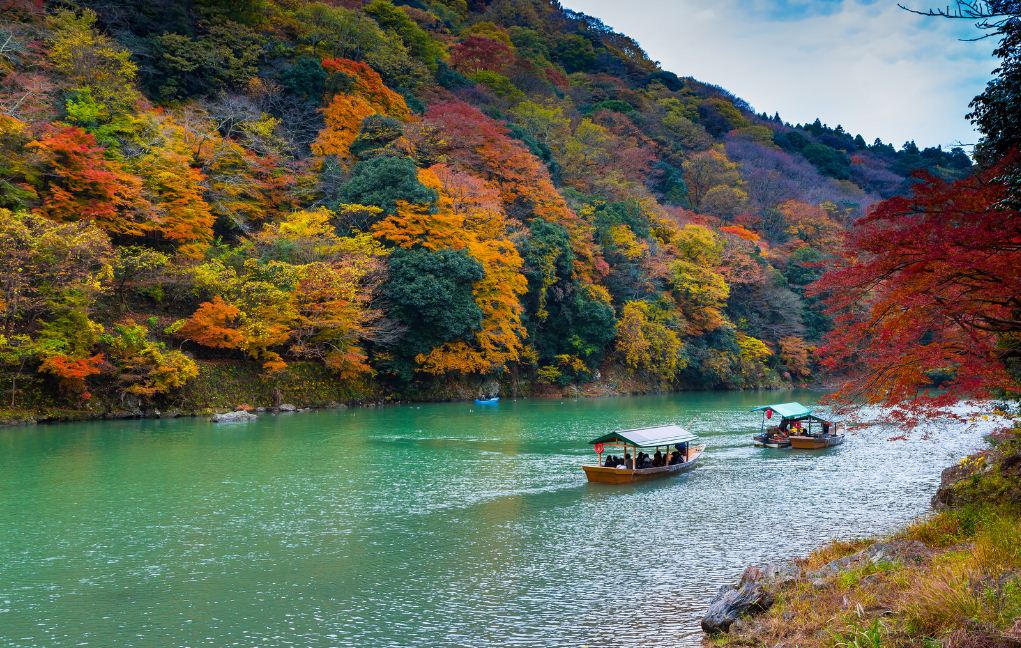
This is a favorite activity of tourists when coming to Arashiyama. Traditional boats are controlled by rowers with oars and bamboo poles. The boat will take visitors along the Hozugawa River from Kameoka to Arashiyama to admire the poetic natural scenery here.
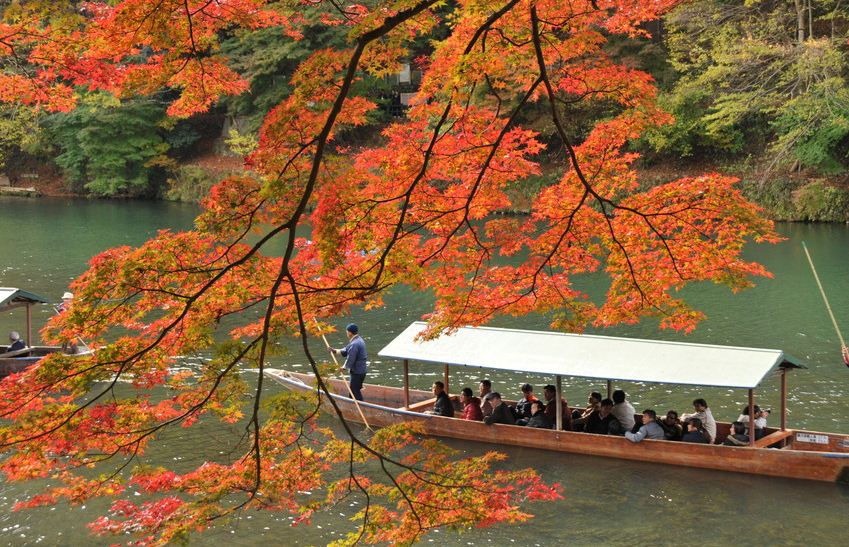
Enjoy beautiful views from Togetsukyo Bridge (arashiyama travel guide)
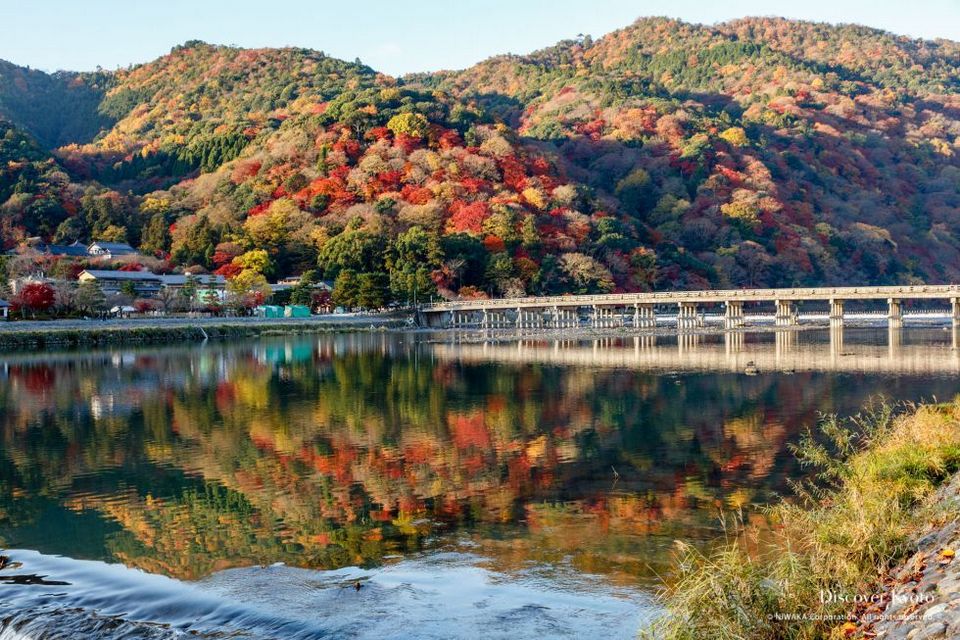
Possessing a prime location across the Katsuragawa River, Togetsukyo Bridge is known as the most beautiful bridge in the world. This is a crowded tourist destination all year round and is often visited by many people as souvenirs. In particular, during cherry blossom season or red leaf season, it becomes even more attractive. If you have the opportunity to go to the bridge in August, you can also admire the sparkling beauty of the Toro lantern release ceremony on the river.
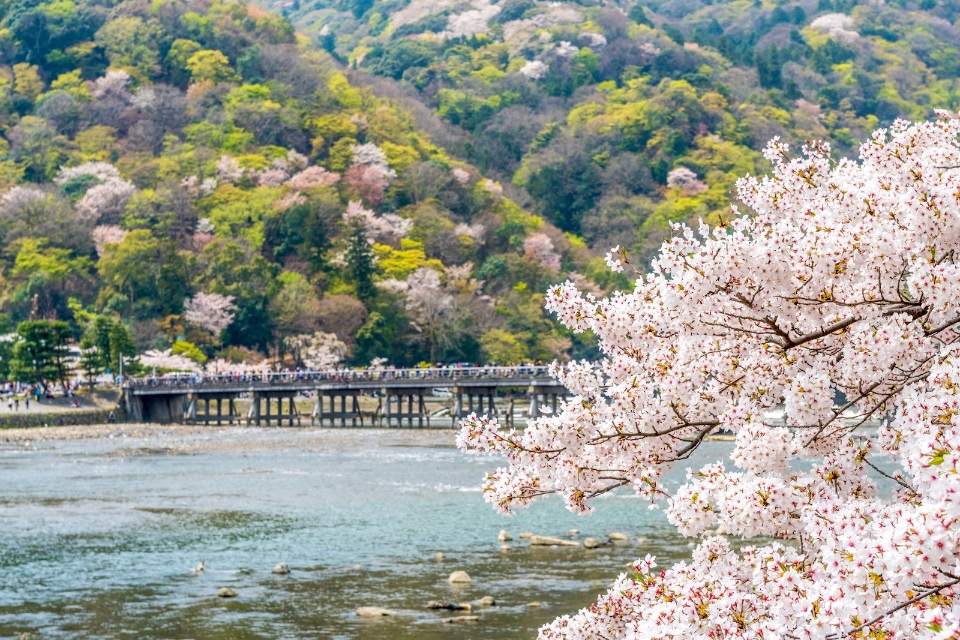
The classic symbol of the Arashiyama area, the Togetsukyō Bridge, is often the first sight tourists see upon arrival. Spanning the Katsura River (also known as the Oi River or Hozu River depending on the region), the bridge offers beautiful views of the scenic river that change with the seasons. Visitors can enjoy cherry blossoms, bright summer lawns and colorful autumn leaves on the slopes of Mount Arashi. On the Oi River side, you can observe people renting boats or rowing on the river themselves. The name Togetsukyo (Moon-Crossing Bridge) was romantically conceived by Emperor Kameyama in the 14th century, who noticed that the moon seemed to be passing over the bridge all night.
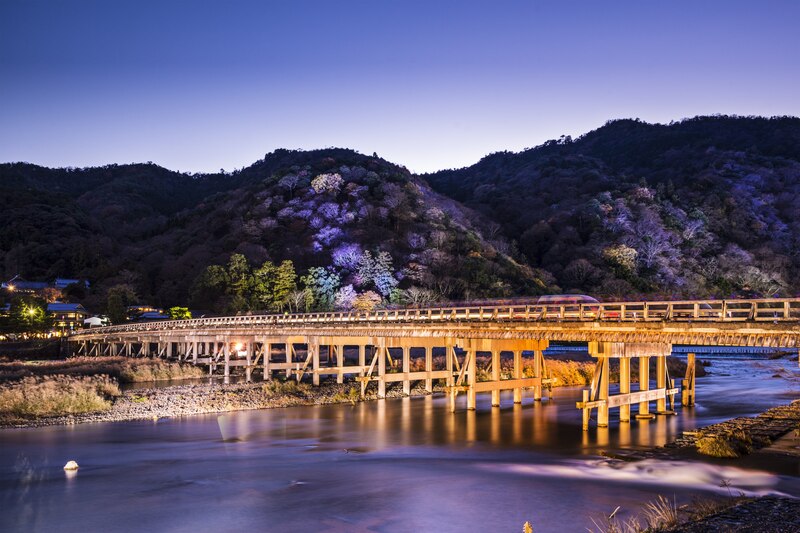
Nonomiya Shrine
- Address: 1 Saganonomiyacho, Ukyo Ward, Kyoto, 616-8375, Japan
- Hours: Open 24 hours
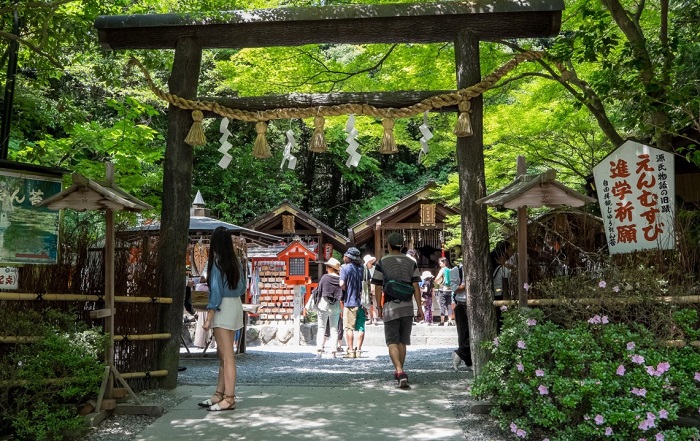
An interesting place to visit in Arashiyama is Nonomiya Shrine, a Shinto shrine famous for its spiritual experiences. Many unmarried women come here and pray for love.
Okochi Sanso Gardens & Tea Room
- Address: 8 Sagaogurayama Tabuchiyamacho, Ukyo Ward, Kyoto, 616-8394, Japan
- Hours: 9 AM–5 PM
A stunning place to visit often overlooked due to its location at the end of Arashiyama’s winding bamboo forest, Okochi Sanso Villa is the former home of Japanese period film star Okochi Denjiro (1898-1962). Located at the foot of Mount Ogura, Okochi Villa features a traditional house, tea room and Buddhist shrine on site amid carefully planned and maintained Japanese-style gardens that showcase the best of the four seasons.
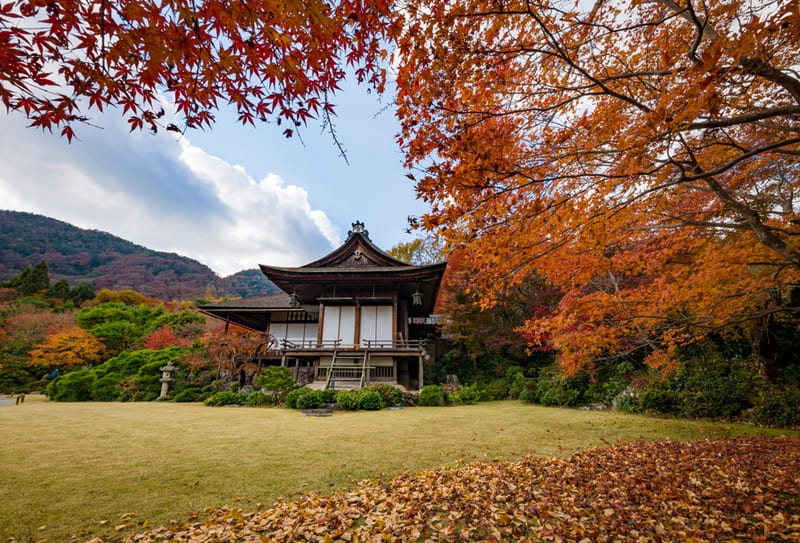
Unlike other top attractions, you will receive a cup of traditional matcha green tea with your admission to Okochi Sanso Gardens. As you start walking through the gardens, you will see the Okochi Sanso tea room. You can hang out in the tea room then sit anywhere and then show your green tea ticket so you can get tea and Japanese sweets. If you sit indoors, you will have a view of the bamboo trees as you sipping tea!
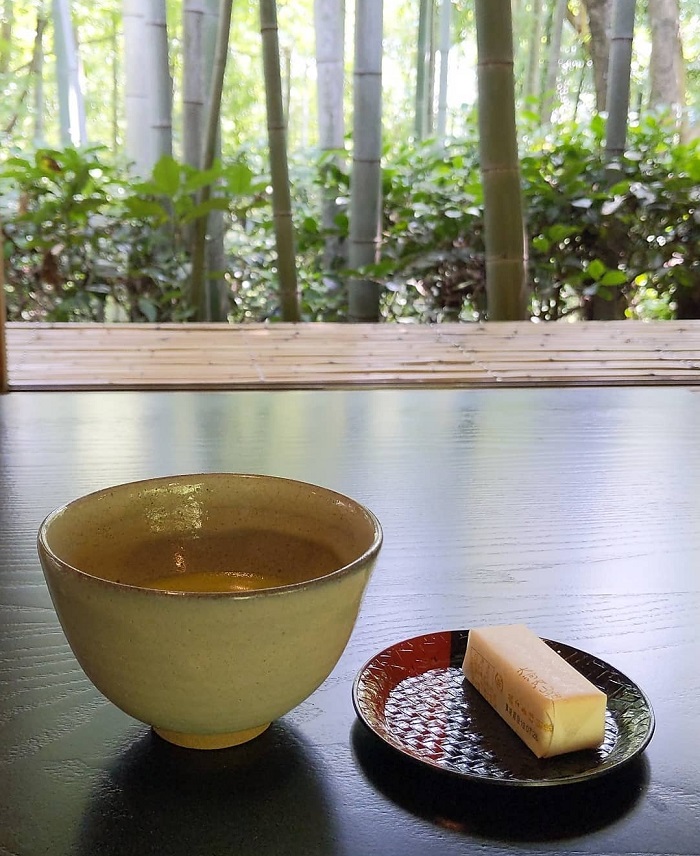
Although built relatively recently, the villa still uses classical architecture and traditional techniques, looking much more dignified than its age. The villa is also famous for its views of Kyoto city below. Although the entrance fee is quite high, it includes a cup of green tea and Japanese sweets served in the tea room, where you can relax and rest while taking in the sights. Fans of the samurai film genre can also visit the outdoor museum.
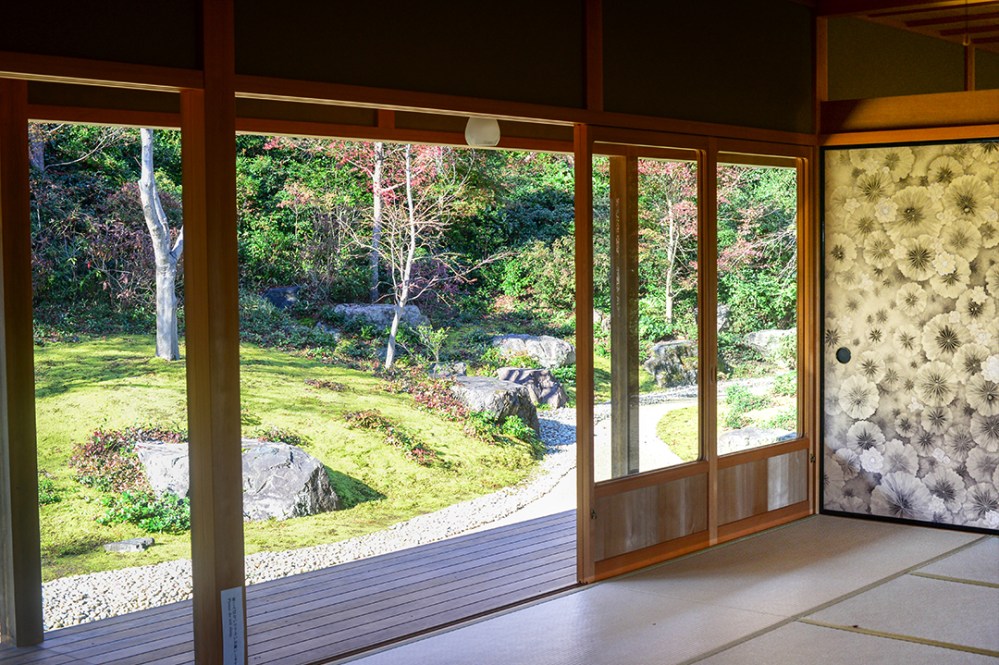
Go to Gioji Temple to admire the green moss garden
- Address: 32 Sagatoriimoto Kozakacho, Ukyo Ward, Kyoto, 616-8435, Japan
- Hours: 9 AM–4:30 PM
Gioji Temple is not only a famous place of culture and history in Arashiyama, but is also known for its impressive giant green moss garden. Although there are no large towers, instead there are simple and rustic thatched huts.
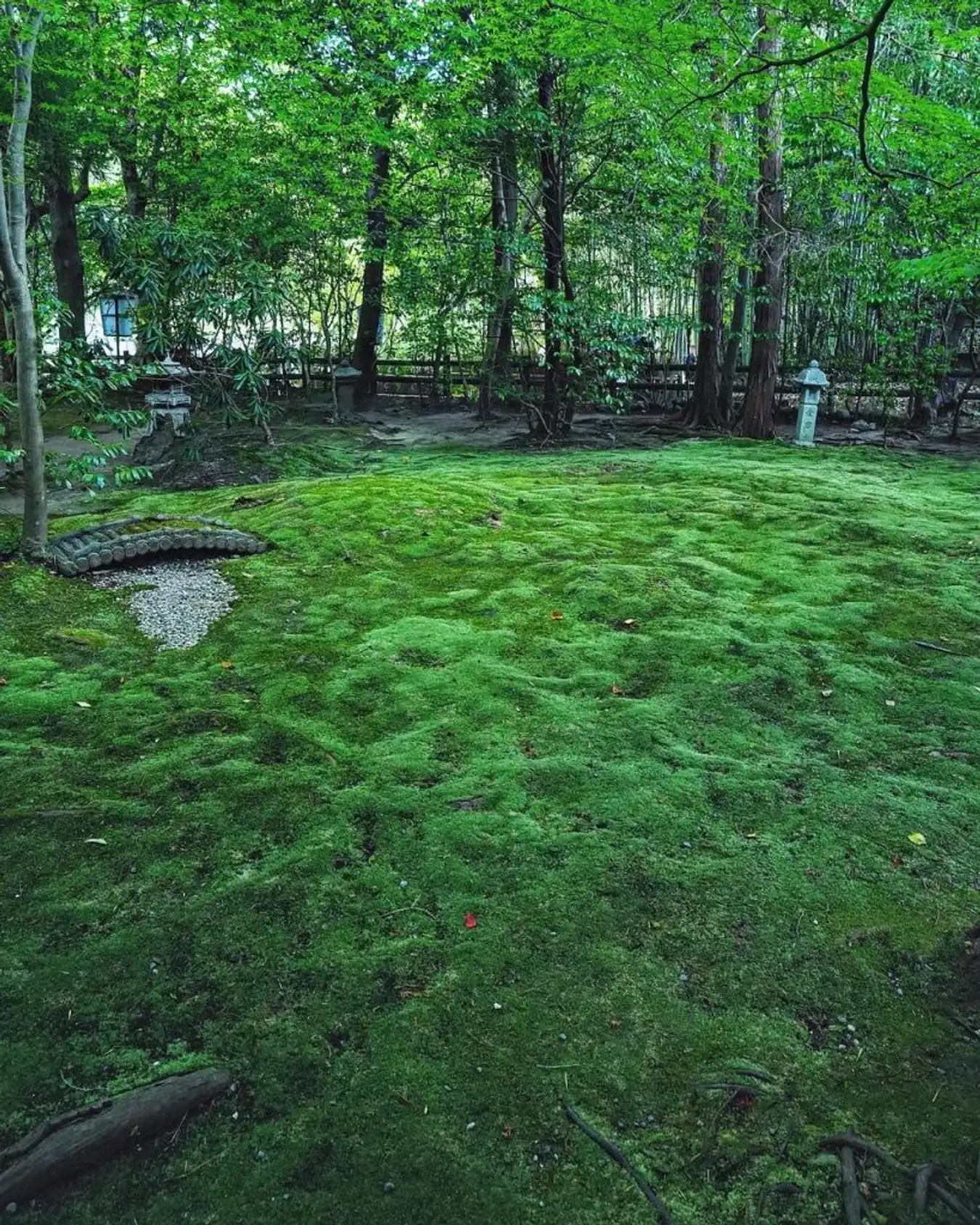
But the scenery here is enough for visitors to feel relaxing and serene for the first time they visit. When you come to the temple, in addition to visiting and admiring the scenery, you can also easily check in to super beautiful corners to commemorate your trip.
Adashino Nenbutsu-ji Temple (#arashiyama travel blog)
- Address: 17番地 Sagatoriimoto Adashinocho, Ukyo Ward, Kyoto, 616-8436, Japan
- Hours: 9 AM–4:30 PM
This lovely temple has 8000 Buddhist statues and a small bamboo grove at the back. Because it’s quite remote, not many people come here, which makes the temple a perfect spot if you prefer to stay away from the crowds in the Arashiyama bamboo forest.
Otagi Nenbutsu-Ji Temple
- Address: 2-5 Sagatoriimoto Fukatanicho, Ukyo Ward, Kyoto, 616-8439, Japan
- Hours: 8 AM–4:30 PM
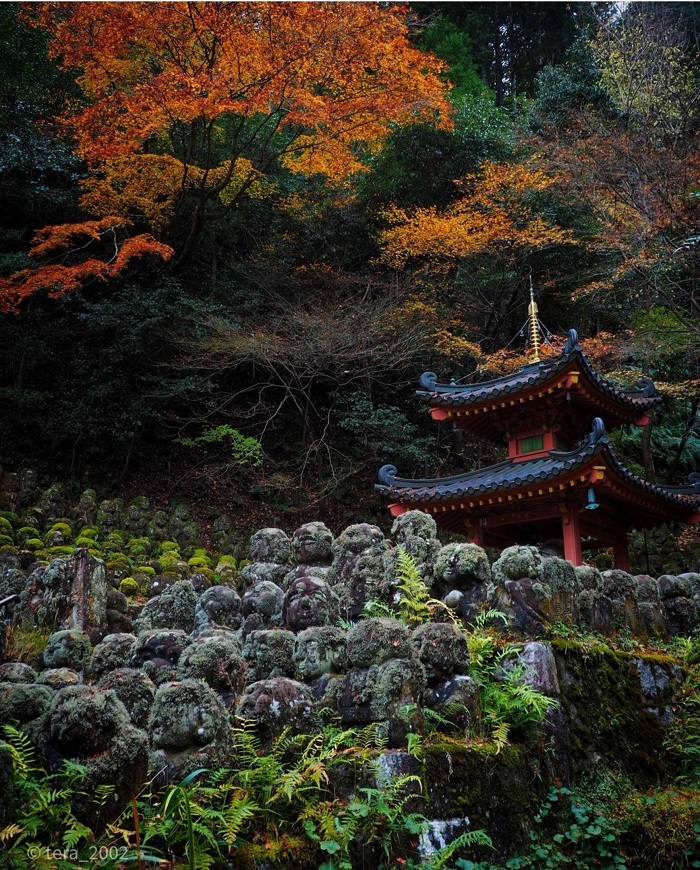
If you’re willing to walk some distance, away from the Arashiyama bamboo groves, you’ll be rewarded with the most beautiful temple in the area! Otagi Nenbutsu-Ji is a remote Buddhist temple that is home to more than 1200 moss-covered rakan. Rakan is a stone statue representing Buddha’s disciples.
Iwatayama Monkey Park
- Address: Japan, 〒616-0004 Kyoto, Nishikyo Ward, Arashiyama Nakaoshitacho, 61
- Hours: 9 AM–4 PM
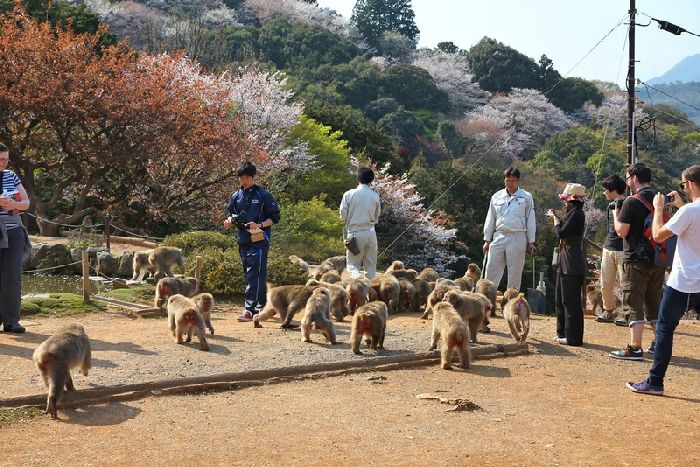
At Iwatayama Monkey Park (also known as Arashiyama Monkey Park), you can observe these animals up close and personal. We can even feed them peanuts and fruits in a designated area. You can cross Togetsukyo Bridge to reach Iwatayama Monkey Park. From the ticket counter, we will walk for about half an hour along a winding path made of both natural materials and concrete stairs to reach the monkeys’ lair. The entrance fee to Monkey Park is 550 yen, open daily from 9am to at least 4pm.
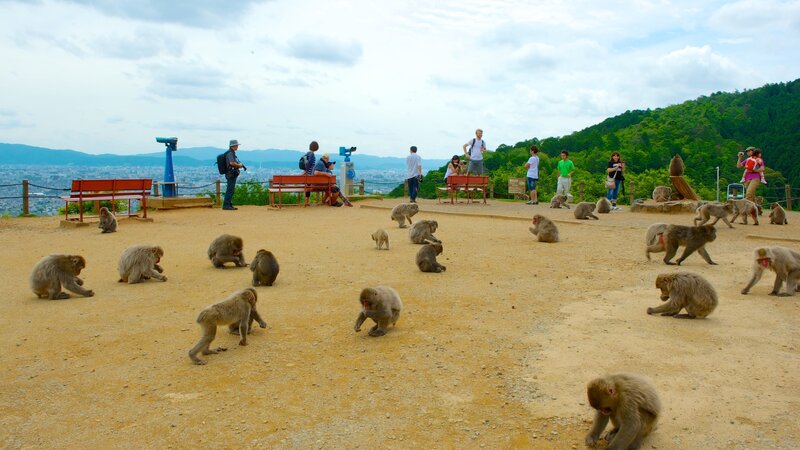
Arashiyama Park Kameyama Area
- Address: Japan, 〒616-8386 Kyoto, Ukyo Ward, Sagakamenoocho, 6
- Hours: Open 24 hours
At the end of the Arashiyama bamboo forest, you can avoid the crowds and take in the stunning views of Kameyama-koen. This hilltop park next to the river is especially attractive during cherry blossom and fall foliage season. Even if you pay attention, you can see monkeys occasionally coming down from the hills to pick fruit.
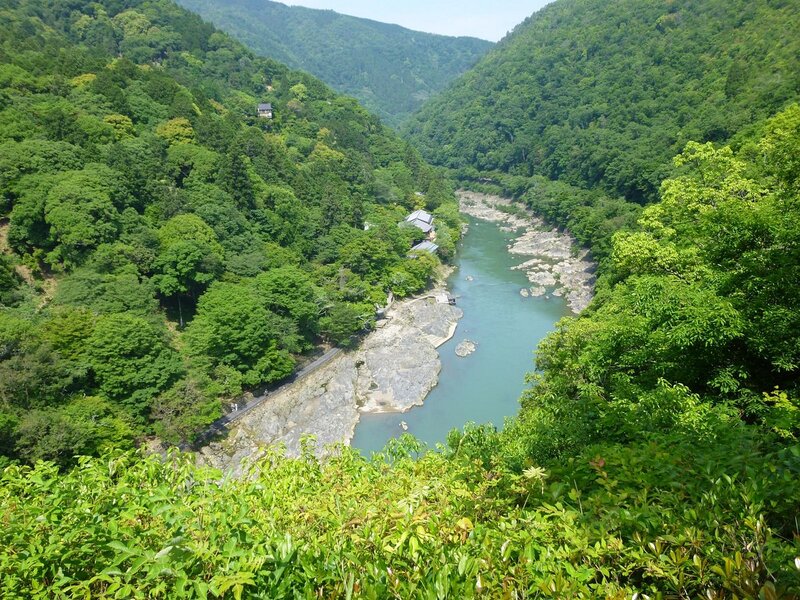
Rest in a ryokan in Arashiyama
Staying in a ryokan – a traditional Japanese inn – is a great way to experience authentic Japanese culture. Both traditional and luxurious, Arashiyama Benkei was once a rural residence for aristocrats on vacation during the Heian Period (794-1185). Public and private onsen (hot springs) are available, as well as meals served in the room. Rooms at this hostel range from 30,000 Yen to 50,000 Yen per night.
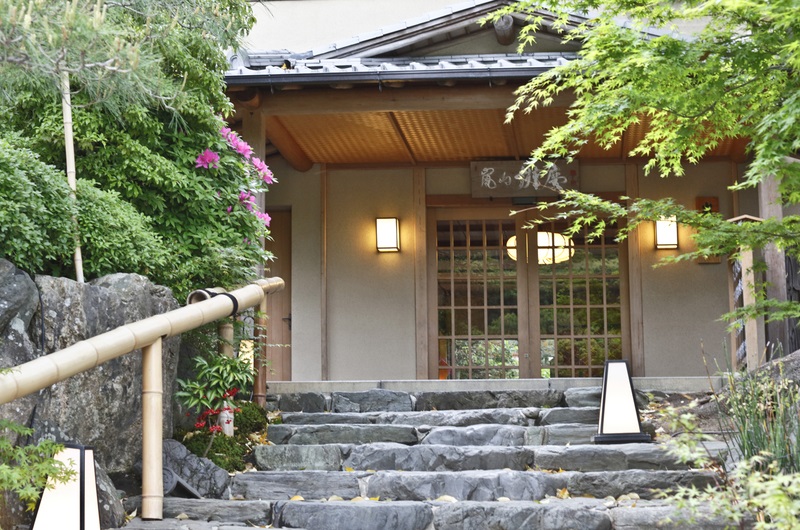
Additionally, Hanaikada (Agoda, Booking) next to Togetsukyo Bridge will give you authentic Arashiyama experiences. The onsen baths, including private baths, are powered entirely by natural hot springs.
Daikaku-ji
Address: 4 Sagaosawacho, Ukyo Ward, Kyoto, 616-8411, Japan
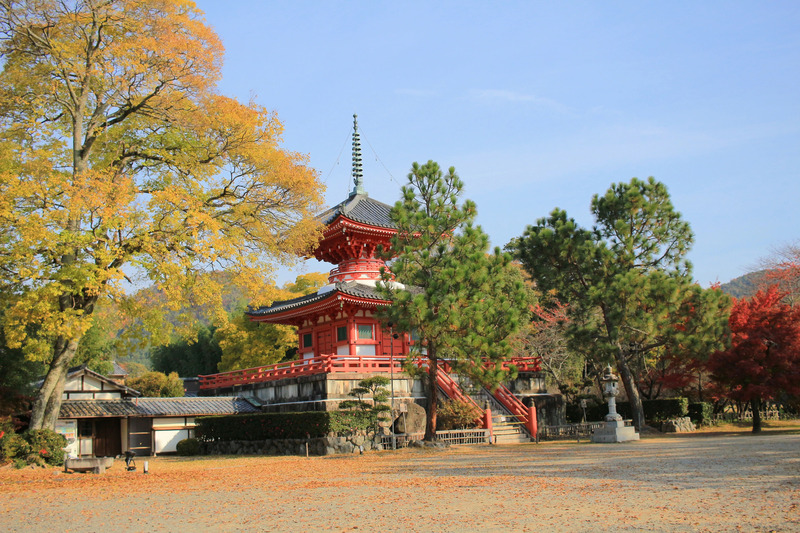
Associated with the history of Japanese Imperial rule, Daikaku-ji temple was originally the villa of Emperor Saga (786 – 842), then became a temple. Although the buildings that originally housed the emperors were destroyed over time, they have been replaced by structures from various locations. The man-made Osawa Pond on the grounds is one of the oldest remaining garden ponds from the Heian period and is beautifully designed. Because of its history as a villa, Daikaku-ji’s layout is slightly different from a normal temple. The main objects of worship at Daikaku-ji were the Five Great Kings (Godai Myō’ō), especially Fudō Myō’ō. The most valuable treasure at the temple is a copy of the Heart Sutra written by Emperor Saga himself.
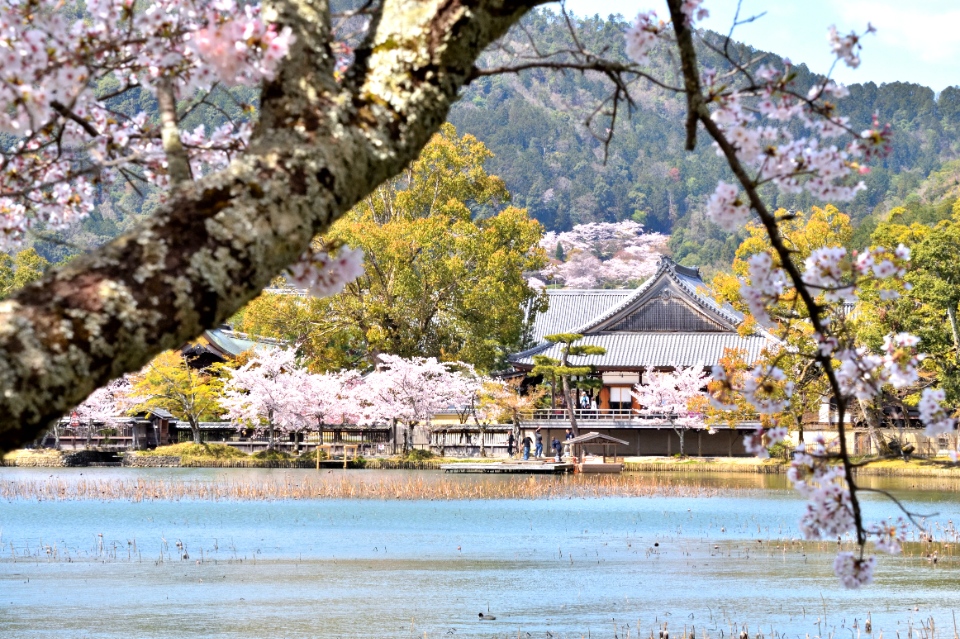
Atago Shrine Torii Gate
Address: 17 Sagakiyotakicho, Ukyo Ward, Kyoto, 616-8452, Japan
As the first marker of Atago Shrine at the top of Mount Atago, the famous Atago Torii gate is located at the intersection at the end of the Sagano Scenic Railway, with one direction taking you along the foot of the hill and the other up the mountain. Although it has been gradually worn down over time, this torii gate still shines brightly, located between two old teahouses, Hiranoya and Tsutaya, both of which have existed for four hundred years and still retain their traditional structure as well like the original grandeur. Those who want to continue hiking can move on to Mount Atago, while those who want to rest can take a break to enjoy a snack at the nearby teahouses.
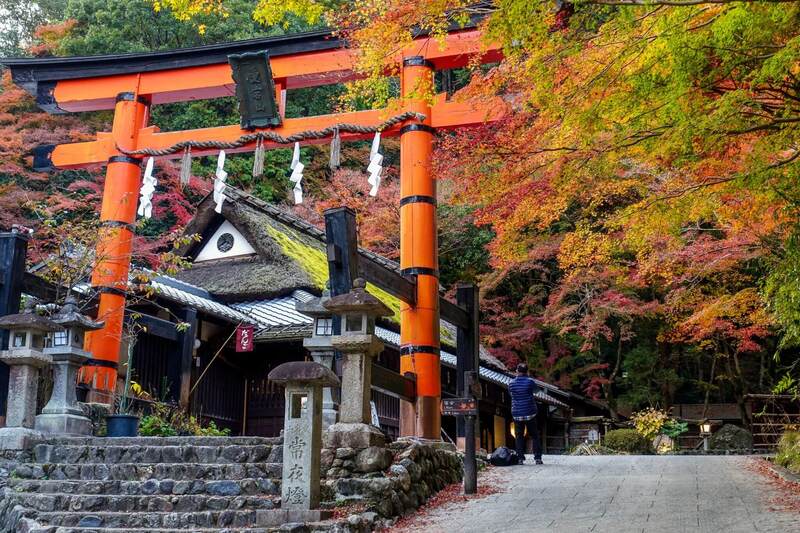
Try matcha latte
Matcha latte in the Kyoto region is famous for its deliciousness and appeal, especially in Arashiyama. There’s nothing better than sipping matcha latte and eating cool red bean cake while strolling through the beautiful bamboo forest and admiring the romantic mountain scenery.
If you want to drink delicious Matcha latte tea, you should buy it at shops in central Kyoto city. The price of a matcha latte will not be too expensive, so you can enjoy it to your heart’s content without fear of hurting your wallet!
Enjoy the famous Yuba Ice Cream
Yuba is a layer of tofu skin made from soymilk. Yuba ice cream can be turned upside down without falling. Combining the flavors of soy milk and ice cream, Yuba ice cream is considered a dessert not to be missed when coming to Arashiyama, especially when visitors come to Kyoto in the summer.
Snacks in Arashiyama
Following the roads around the Arashiyama area, you will see many stalls and restaurants selling delicious snacks. While admiring the beautiful scenery, stop at each stall to enjoy mouth-watering dishes such as matcha individual cakes and boiled eggs. peach, Udon noodles, matcha ice cream…
Where to stay in Arashiyama?
The GrandWest Arashiyama
The GrandWest Arashiyama is among the high-end 3.5-star hotels highly appreciated by many tourists in the Arashiyama area. Space is the hotel’s top plus point, combining modern and traditional Japanese style quite uniquely. In particular, each bedroom is equipped with amenities, using a warm, luxurious light brown tone and minimalistic items. (Agoda, Booking)
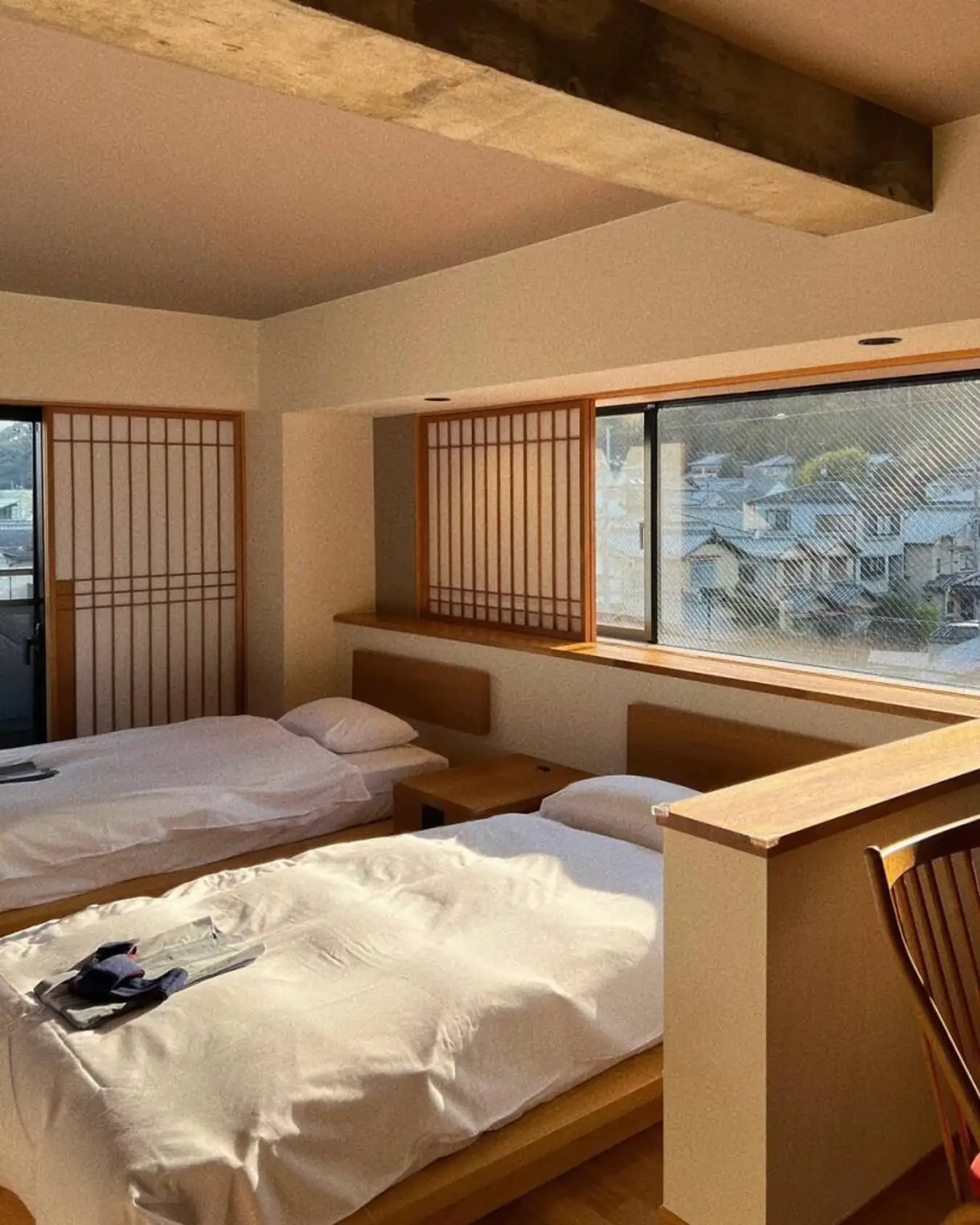
Nagi Kyoto Arashiyama
Although Nagi Kyoto Arashiyama has 3-star quality at Arashiyama, it is built in a modern, subtle Japanese style that is very impressive. Along with that, the bedroom space is optimized for space, taking advantage of every corner for tourists to enjoy to the fullest. In particular, the hotel uses black and milky white tones, combined with cozy yellow lights. (Agoda, Booking)
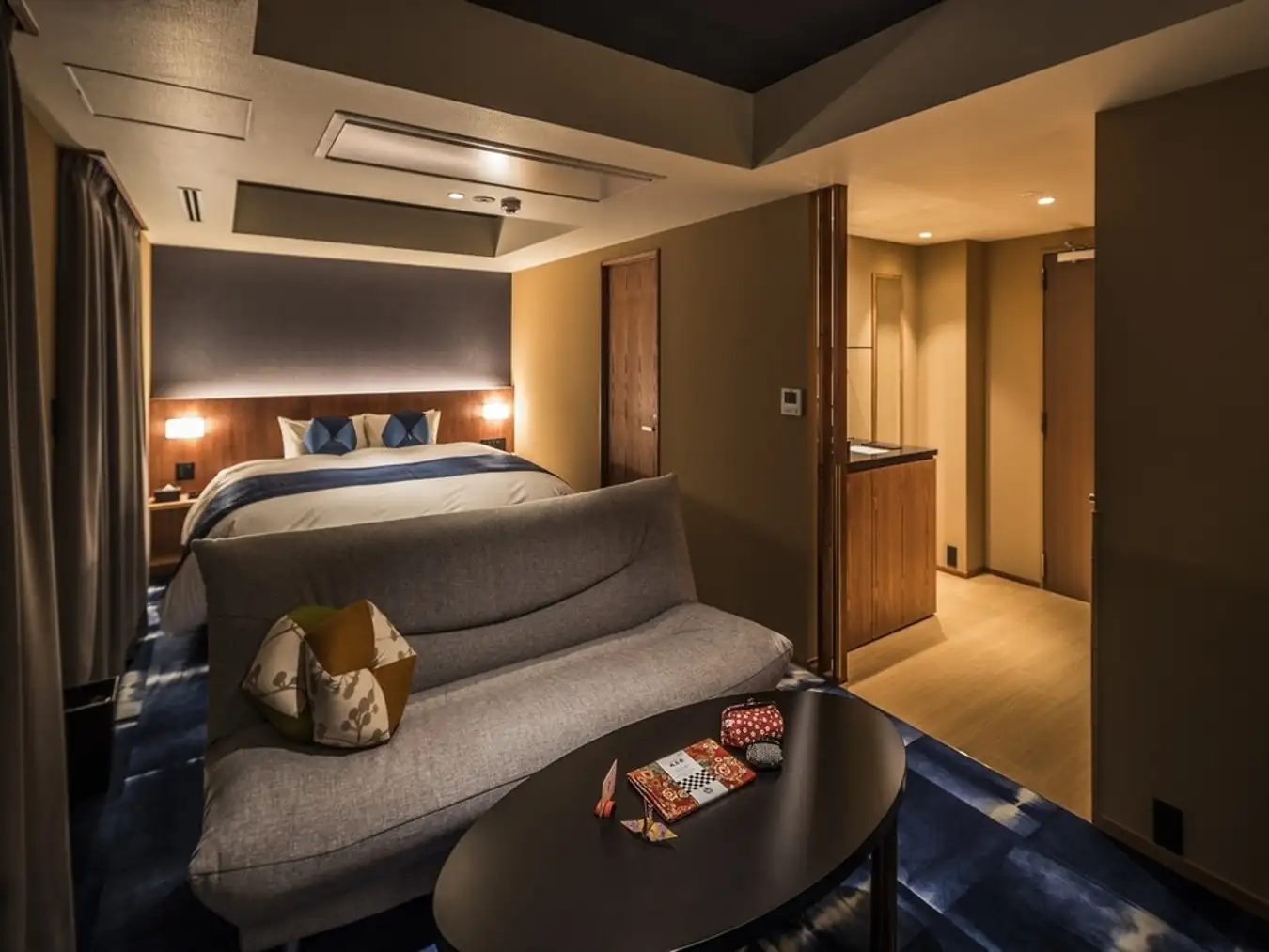
Ranzan Hotel
Ranzan Hotel is an ideal stopover for visitors to the suburbs of Kyoto. With a simple Japanese-style design, but no less comfortable and sophisticated. Each room is equipped with a comfortable high bed, wide window, private toilet and work desk. Besides, this cheap hotel in Japan also provides all the necessary amenities for visitors. (Agoda, Booking)
Some tips before you go
- There have been reviews online and shared too many experiences as well as how to go to the bamboo forest in Arashiyama, but the common point of all the advice is that you should go very early to have a place to stand, otherwise there will be 3-4 tourists for every 1 square stood crowded together, there was no peaceful and airy place to take alone photo.
- Maybe you should depart at 6-7 am. When you get here around 8 am, you can comfortably take selfies and take virtual photos. The sunshine is also beautiful at this time.
- To have a great photo session at the bamboo forest, you should come here early in the morning. There are fewer tourists and the weather is cooler in the summer.
- IMPORTANT: If you go to visit the Kyoto bamboo forest, which station should you get off at if departing from Kyoto Station by train? You need to remember the name of the station you need to get off at: Saga-arashiyama (check Google map). But according to my experience, you should go here by bus to avoid having to walk far compared to taking the train and getting off at Saga-arashiyama Station.
- My experience is to spend a whole day exploring Arashiyama district. In the morning, you can take the train to the bamboo forest, admire the scenery while walking, participate in boating on the Katsura River, and visit Tenryuji Temple. In the afternoon, go around the Golden Temple Ginkaku-ji. In the afternoon, when you return to Kyoto Station, take the opportunity to check in and take photos at Toji temple in the center.
- During December, you should visit the Arashiyama bamboo forest at night because the paths are illuminated and the bamboo forest looks magical and poetic. This light festival is called Arashiyama Hanatouro lights and it only takes place in December for about 10 days, from 5pm to 8:30pm.
Through the above article about Arashiyama, it can be seen that this land brings many interesting experiences to visitors when coming to Kyoto. Hopefully, with these shares, you will have interesting and satisfying moments in this beautiful natural land. Check out more Kyoto guide here.
Some best day tours, trips, activities and transfer services, tickets in, to and from Kyoto you can refer to
- Private Kansai International Airport Transfers (KIX) for Kyoto
- Limousine Bus Transfers between Kansai International Airport (KIX) and Osaka or Kyoto
- Shared Night Bus Transfers from Kyoto to Tokyo
- Private Kansai Airport (KIX) Transfers to Osaka, Kyoto, Nara, Uji, Kobe, or Arima
- Kyoto-Osaka Sightseeing Pass (1 Day/2 Days, Kyoto Pick Up)
- Kyoto-Osaka Sightseeing Pass 1 Day/2 Days (Pick up at Osaka)
- Randen + Subway 1 Day Pass
- Kyoto Temples & Shrines Day Tour from Osaka: Fushimi Inari-taisha, Arashiyama, Kiyomizu-dera & More
- Kyoto Perfect Day Tour from Osaka or Kyoto: Kiyomizu-dera, Fushimi Inari-taisha, Arashiyama & More
- Kyoto and Nara Day Tour from Osaka/Kyoto
- Kyoto Afternoon Tour from Osaka
- Hankyu Tourist Pass
- Kyoto and Nara Day Tour from Osaka/Kyoto
- Sagano Romantic Train One-Way Ticket (Saga or Kameoka Departure)
- Kimono Rental and Photoshoot in Kyoto by Ouka Kimono
- Kyoto Sagano Romantic Train Day Tour
- Kyoto Temples & Shrines Day Tour from Kyoto: Fushimi Inari-taisha, Arashiyama, Kiyomizu-dera & More
- Amanohashidate & Miyama One Day Tour from Osaka/Kyoto
- JR Kansai-Hiroshima Area Pass
- Kimono Rental in Kyoto Kiyomizu Temple
- One Day Kimono Rental
- Kyoto Temples & Shrines Day Tour from Osaka
- Kimono and Yukata Rental at Kimono Miyabi Kyoto
- 4G Prepaid Sim Card (JP Airports Pick Up) for Japan
- 4G WiFi (Japan Pick Up) for Japan
- JR Pass for Whole Japan (7, 14, or 21 Days)
- Arashiyama Bamboo Forest Half Day Tour
- Arashiyama Morning Walking Tour with Sagano Romantic Train in Kyoto
- Arashiyama, Kinkakuji, Nara Park Day Tour from Osaka/Kyoto
- Kyoto Arashiyama Bamboo Forest & Garden Half Day Walking Tour
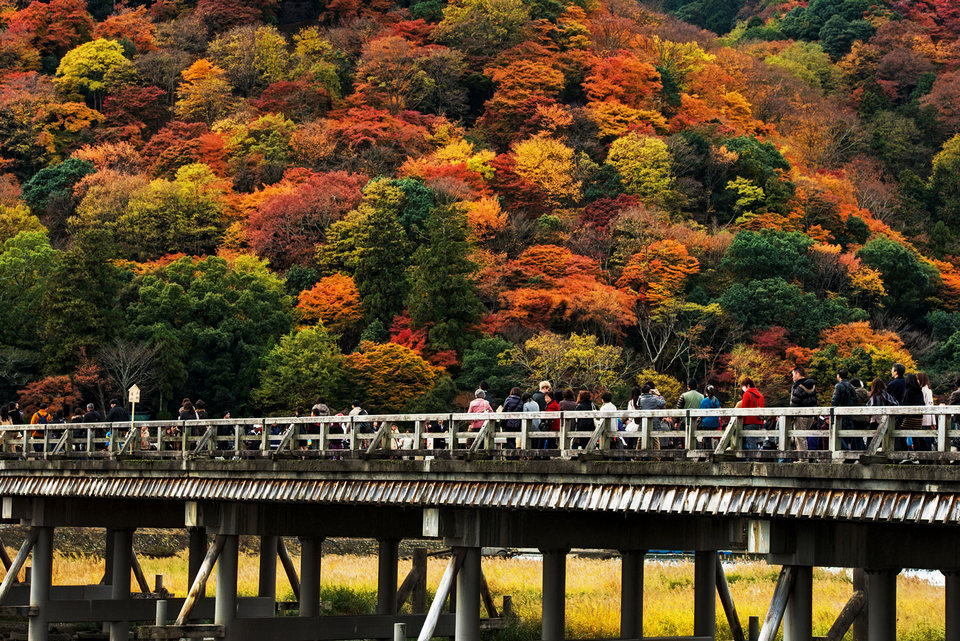
Are you finding more top things to do in Kyoto: Tours, activities, attractions and other things? Let’s check it out at here. And read more: Kyoto blog (Kyoto travel blog) — The fullest Kyoto travel guide blog for a budget trip to Kyoto, Japan for the first-timers. And Kyoto 3 day itinerary — How to visit Kyoto in 3 days & what to do in Kyoto in 3 days perfectly?

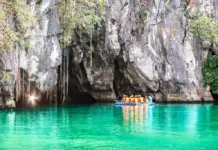
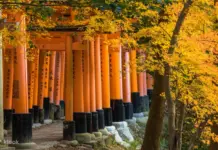





























![10 best airports in Asia in 2016 [RANKED] kuala-lumpur-international-airport-best airports in asia in 2016 by skytrax ratings](https://livingnomads.com/wp-content/uploads/2016/08/29/kuala-lumpur-international-airport-best-airports-in-asia-in-2016-by-skytrax-ratings-218x150.jpg)








